




Jekyll Island Authority 2021 Legislative Oversight Committee
Senator Blake Tillery, Chairperson, Vidalia, Georgia
Representative Jon Burns, Vice-Chair, Newington, Georgia
Senator Clint Dixon, Buford, Georgia
Representative Matt Hatchett, Dublin, Georgia
Senator Billy Hickman, Statesboro, Georgia
Representation Don Hogan, St. Simons Island, Georgia
Joseph B. Wilkinson, Jr., Chairperson, St. Simons Island, Georgia
Robert “Bob” W. Krueger, Hawkinsville, Georgia
William “Bill” H. Gross, Kingsland, Georgia
Hugh “Trip” Tollison, Savannah, Georgia
Joy Burch-Meeks, Screven, Georgia
Dr. L.C. “Buster” Evans, Bolingbroke, Georgia
Mark Williams, Atlanta, Georgia
Glen Willard, Richmond Hill, Georgia
Dale Atkins, Baxley, Georgia
C. Jones Hooks, Executive Director
Noel Jensen, Deputy Executive Director
Ben Carswell, Director of Conservation and Sustainability
Melissa Cruthirds, General Counsel
Yank Moore, Natural Resources Manager
Jeanne Brennan-Krawetzky, Tennis Center Team Lead
Spencer Brookman, PGA Director of Golf
Taylor Davis, Historic Preservationist
Ronnie Douglas, Campground Manager
Cliff Gawron, Director of Landscaping and Planning
Alexa Hawkins, Director of Marketing & Communications
Maria Humphrey, Lease Manager
Jenna Johnson, Director of Human Resources
Marjorie Johnson, Chief Accounting Officer
Michelle Kaylor, Georgia Sea Turtle Director
Nancy Kring-Rowan, Events Operation Manager
Andrea Marroquin, Museum Curator
Dr. Terry Norton, Director of Veterinary and Wildlife Services
Lauren Pacheco, AmeriCorps & Volunteer Program Manager
Dana Pender, Operations Specialist
Michael Scott, Director of Historic Resources
Steve Sharpe, Summer Waves General Manager
Alan Thurston, Water/Wastewater Superintendent
Anna Trapp, Assistant to the Executive Director
Kevin Udell, Sr. Sales Manager
External Review Committee
Karl Burgess, GA Department of Natural Resources, Coastal Resources Division
Dialo Cartwright, Georgia Power
Teeple Hill, Schupe Surveyors
Becky Kelly, GA DNR, State Parks & Historic Sites (retired)
Charles McMillan, Georgia Conservancy
Scott McQuade, Golden Isles Convention & Visitors Bureau
Ralph Staffins, President, Golden Isles Chamber of Commerce
Stakeholder Committee
Aaron Carone, Real Estate Professional and Jekyll resident
David Egan, Initiative to Protect Jekyll Island

Mindy Egan, Initiative to Protect Jekyll Island
Jeff Homans, Landscape Architect
Mac Jeffries, Jekyll Island Beach Village Business Community
Maureen Lennon, Jekyll Ocean Oaks homeowner
Jim McKenna, President, Jekyll Island Citizens Association
Gil McLemore, Jekyll Island Foundation and Jekyll resident
Susan Middleton, Board Chairman, Villas by the Sea
Arch Smith, Georgia 4-H
Travis Stegall, City of Brunswick, Downtown Development Authority
Rita Thompson, President, Friends of Historic Jekyll Island
Bruce Westerlin, Chairman, Jekyll Island Hospitality Association
Carl Vinson Institute of Government, University of Georgia
Leigh Askew Elkins, Principal Investigator, Senior Public Service Associate
Courtney Alford-Pomeroy, Communications Director
Danny Bivins, Senior Public Service Associate
Varad Dabke, Legal Fellow
Katie Davis, Research Professional
Karen DeVivo, Editor
Shana Jones, Planning and Environmental Services Program Manager
Kaitlin Messich, Public Service Assistant
Jimmy Nolan, GIS Specialist
J. Scott Pippin, Public Service Associate
Darrell Robinson, Research Professional
T. Clark Stancil, Creative Design Specialist
Theresa Wright, Senior Public Service Associate
College of Environment and Design, University of Georgia
Eleonora Machado, Graphics Coordinator

For nearly two decades, the Jekyll Island Authority Board’s emphasis has been revitalization.
The 2014 Master Plan supported these revitalization efforts and was the first Master Plan to establish specific acreages available for developed and undeveloped lands on Jekyll Island.
I am proud revitalization was accomplished by redevelopment of previously developed areas and that the 2014 Master Plan served as a successful guide.
Now that most of the original revitalization plan has been completed, the emphasis becomes capacity management to preserve Jekyll’s natural resources and to assure the island does not become a disappointing destination for visitors and residents alike.
As a result of successful revitalization, the greatest challenge now for Jekyll Island is capacity management. Management of capacity including venues, operations, and island visitation. The island’s greatest asset — its natural resources — must be retained!
Avoiding overdevelopment is the emphasis of the 2021 Master Plan Update. Jekyll’s balance of acreage classified as “undeveloped” and its “developed” green spaces comprise its unique and most distinguishable characteristics — the abundant natural areas we must protect. Beyond controlling vertical construction, visitation management goals include the idea of ease of movement without congested vehicular traffic and allowing guests and residents to enjoy Jekyll and its amenities without overcrowding. While the Jekyll Island Authority has begun incorporating several management tools into our operational mix, including dynamic pricing, seasonal scheduling, event/ activity management, and venue dispersal, I believe more controls will be required, and this plan will guide that.
Balance remains the key to the success of Jekyll Island. Visitation numbers must be significant enough to fill our hotels and convention center since they primarily generate the financial resources needed to protect our natural environment. However, visitation must be managed to safeguard the Jekyll experience overnight visitors, day trippers, and residents expect and appreciate — the uncrowded and natural encounter that sets Jekyll apart from other destinations.
Anticipating the future,



In early 2021, the Jekyll Island Authority contracted with the University of Georgia’s Carl Vinson Institute of Government to update its 2014 Master Plan. Master plans should reflect the priorities of an organization and provide a guide for its work program. Do master plans include every activity of an organization? They do not. Master plans are developed under current conditions, but future conditions may change priorities. The Jekyll Island Authority must be resilient, flexible, and adaptable, while maintaining a steady course to live out its mission, vision, and values. Its master plan should guide its actions in a way that allows conditions to inform what actions are critical.
This 2021 Master Plan Update for the Jekyll Island Authority (JIA) relies not only on the good work done in creating the 2014 Master Plan, but also on the work that has been done to advance the JIA since plan adoption, like the 2020 Conservation Plan, the Carrying Capacity and Infrastructure Assessment Study, and the Island-Wide Transportation System Feasibility Report, among others. These studies, along with stakeholder, visitor, and resident input, have led to this master plan update, which better reflects the priorities of the JIA, its board of directors, and visitors to and residents of Jekyll Island State Park.
The Master Plan Update is intended to provide guidance for the next five years as the Jekyll Island Authority Board considers policy decisions. Staff implementation of the plan, and how it is integrated into individual work plans and operational plans, will be done through the annual strategic plan that the JIA must submit to the Office of Planning and Budget. Because it is only a five-year plan, it is not organized into short and long-term goals. Rather, the expectation is that prioritizing the recommendations is the responsibility of the JIA staff with support and guidance from the JIA Board of Directors. Factors such as budget and capacity may influence how and when the recommendations are implemented.
Master plans are dynamic documents that move forward and evolve, and therefore, from time to time, require updating.
MISSION
As stewards of Jekyll Island’s past, present, and future, we are dedicated to maintaining the delicate balance between nature and humankind.

Through progressive stewardship and excellent customer service, Jekyll Island will be recognized as a sustainable conservation community that is the choice destination among all who experience its unique environment, service, and amenities.
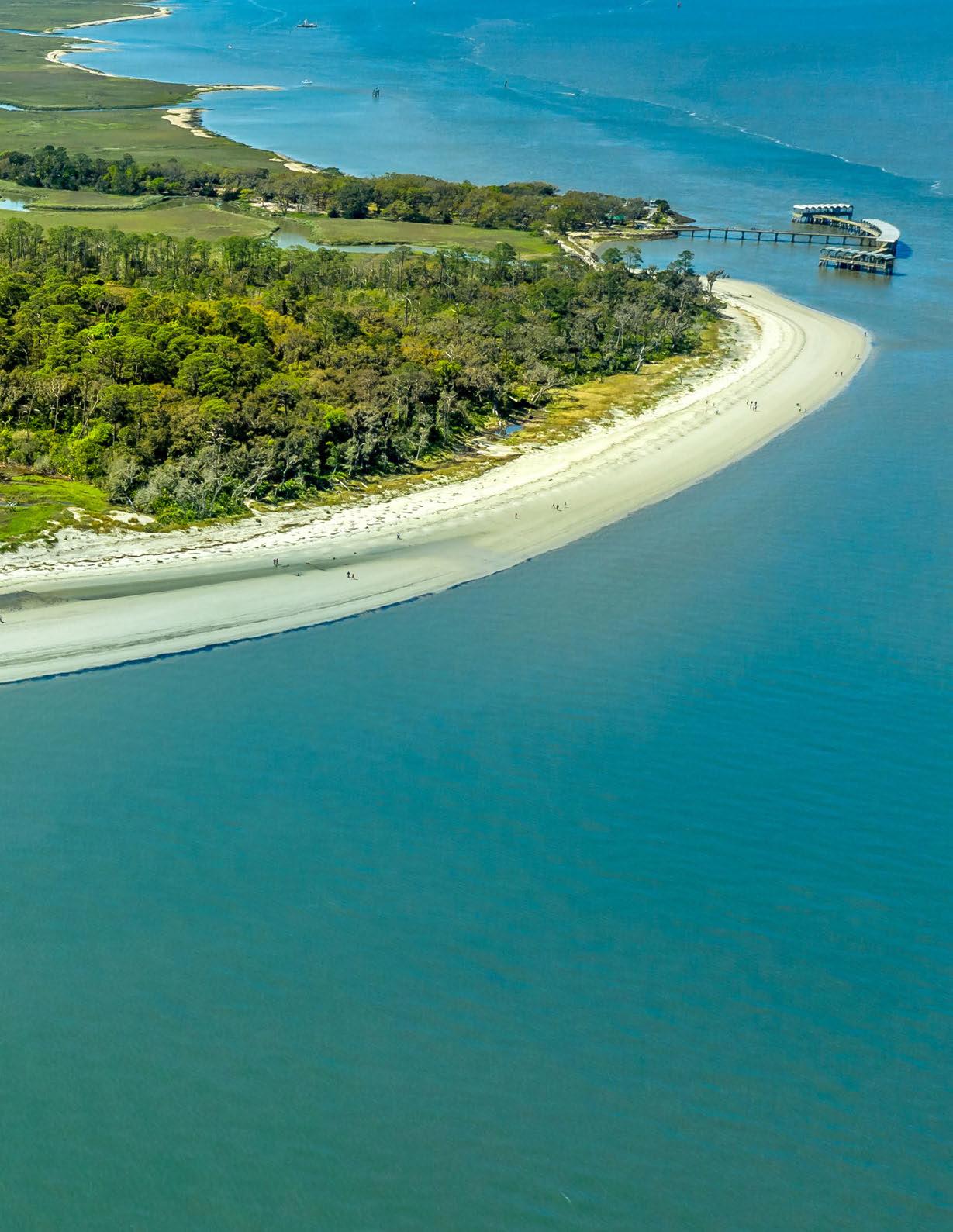
The Jekyll Island Authority brand values are the set of guiding principles we use as our moral compass. They inform the work we do every day and define why we exist. Preservation. Education. Conservation. As stewards of the island, we’re dedicated to conserving our environment, preserving our heritage, and inspiring others to help us maintain our natural and historic treasures.
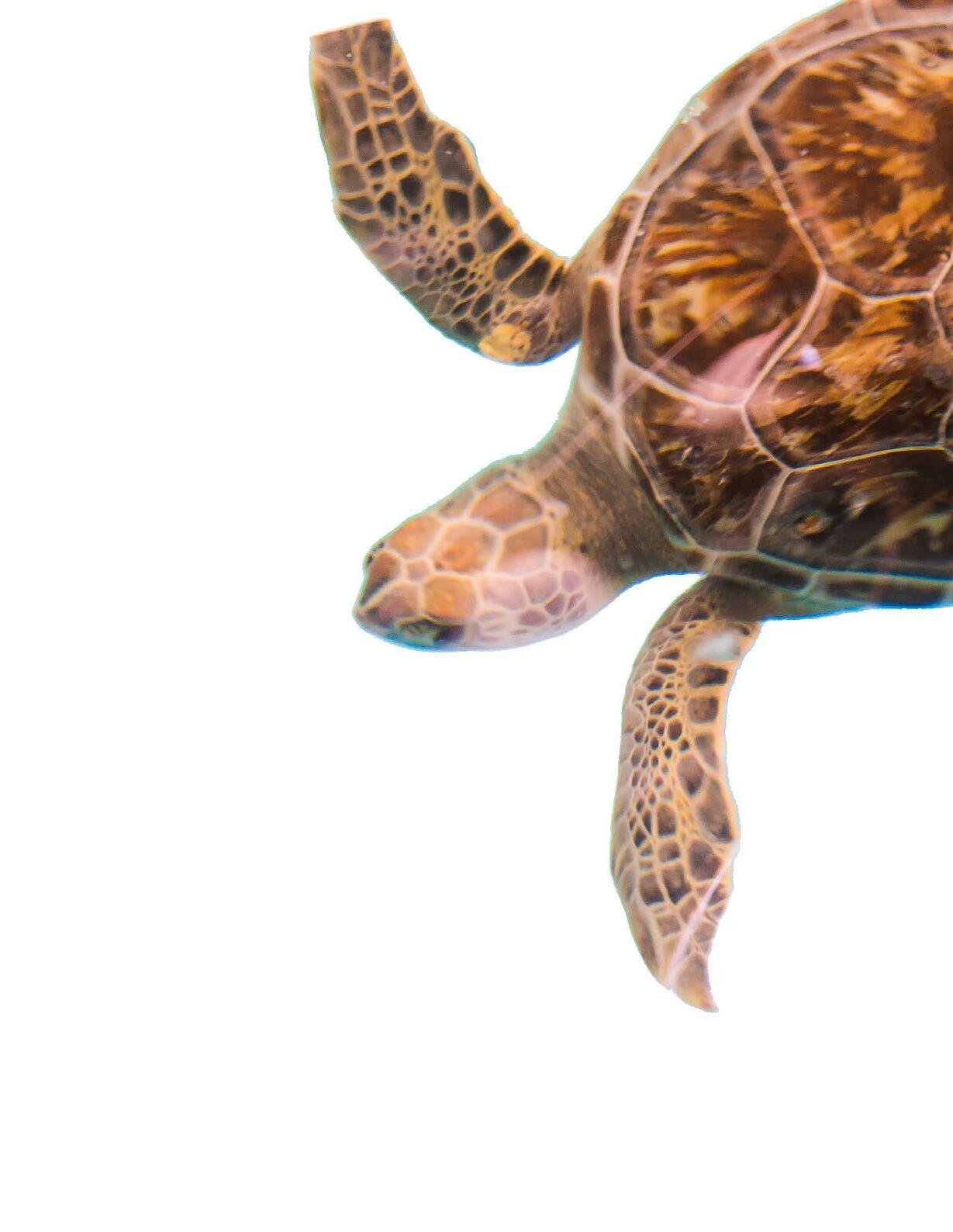
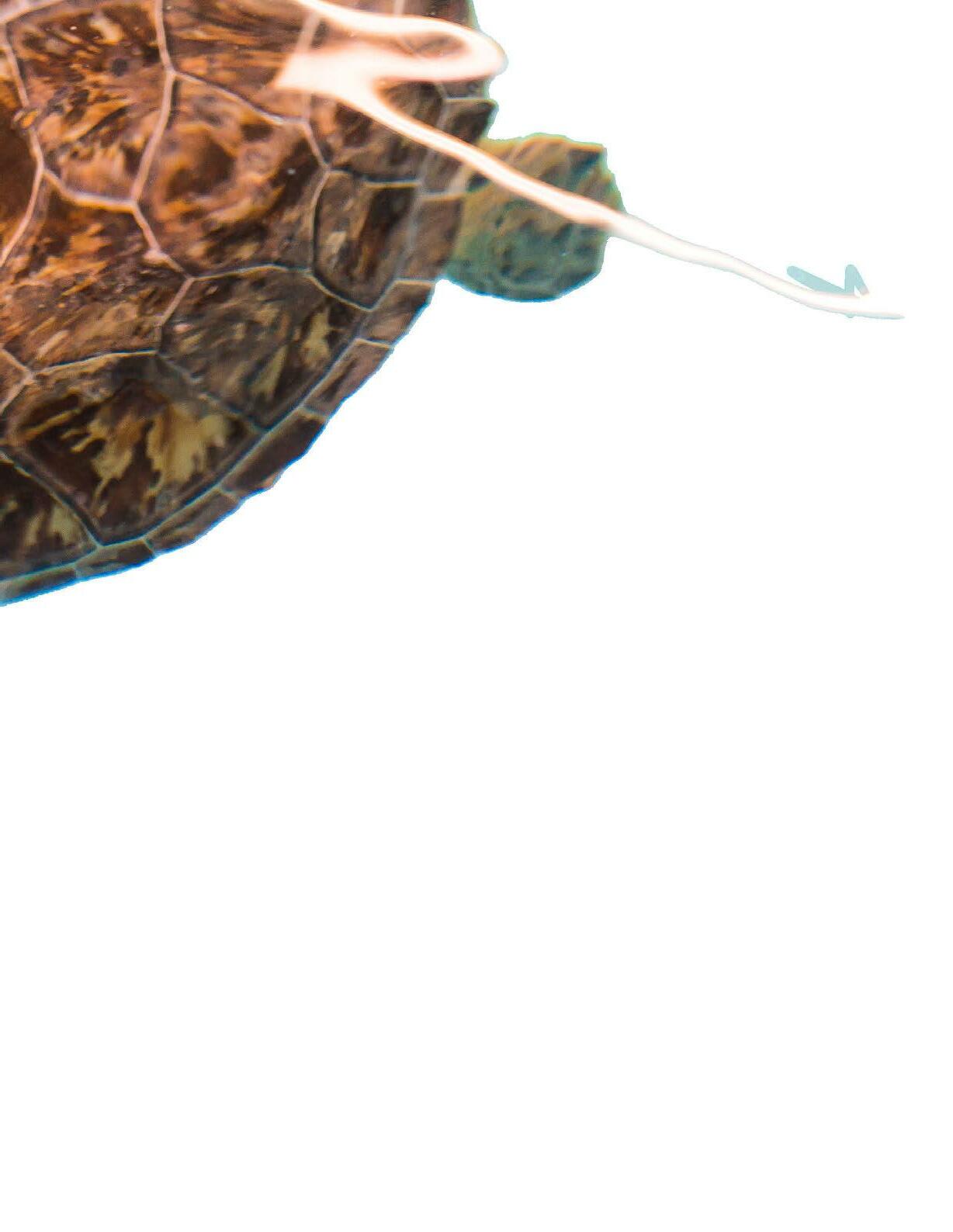

Since the adoption of the 2014 Master Plan, Jekyll Island has endured Hurricane Irma, Hurricane Matthew, an ice storm, and the COVID-19 global pandemic. The resiliency of the JIA and of Jekyll Island continues to shine through even in the face of what seem like unrelenting challenges. The JIA has continued to set high expectations for itself and its partners. The resiliency and persistence have paid significant dividends, with myriad accomplishments over the past seven years.
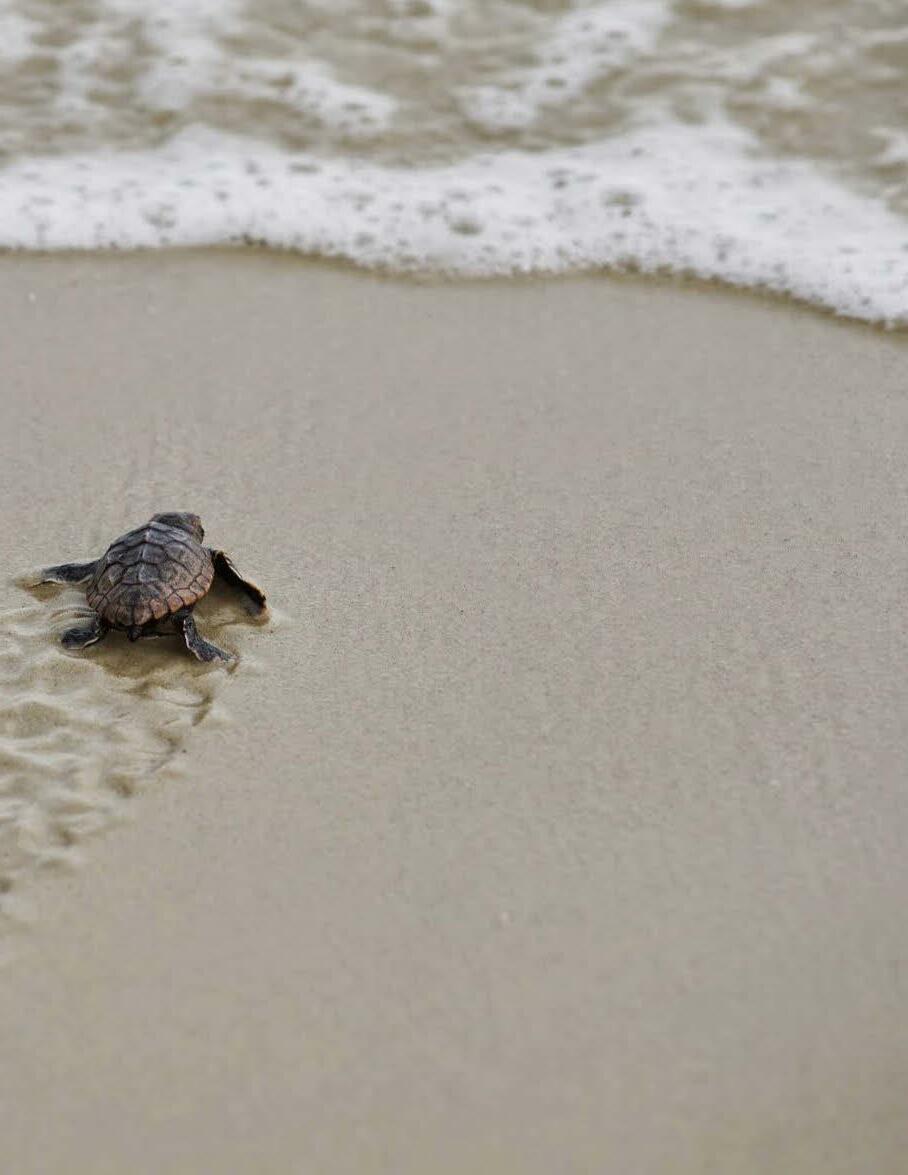
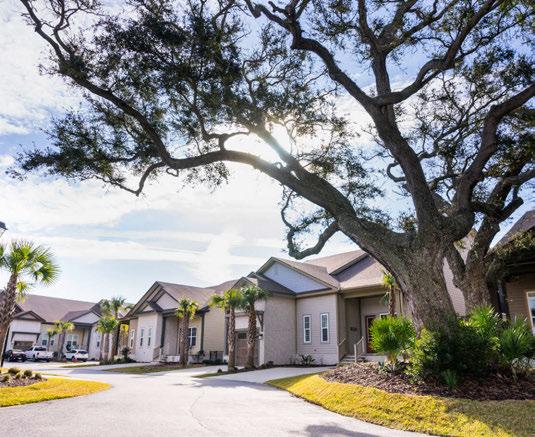

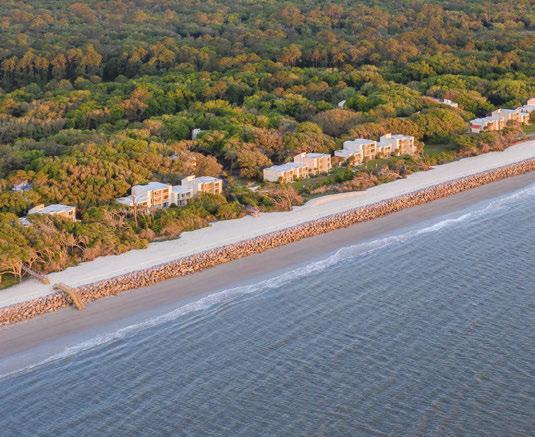
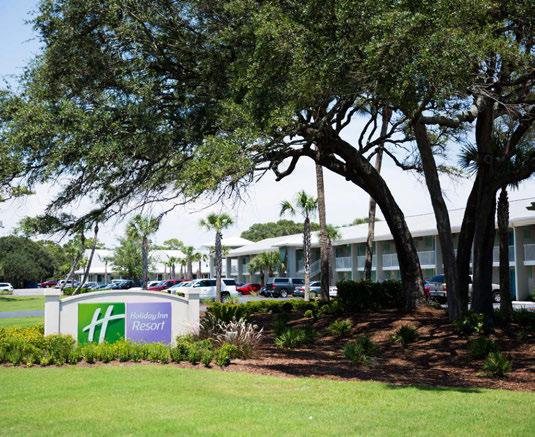
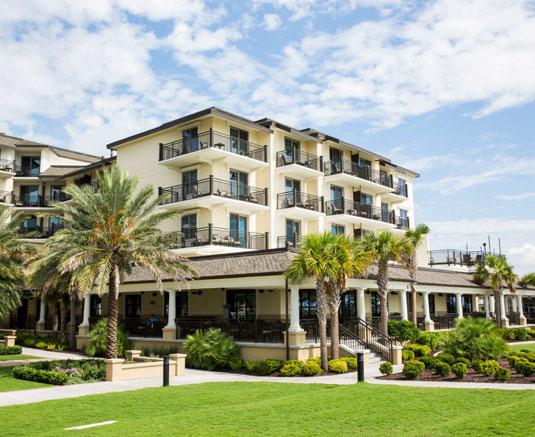
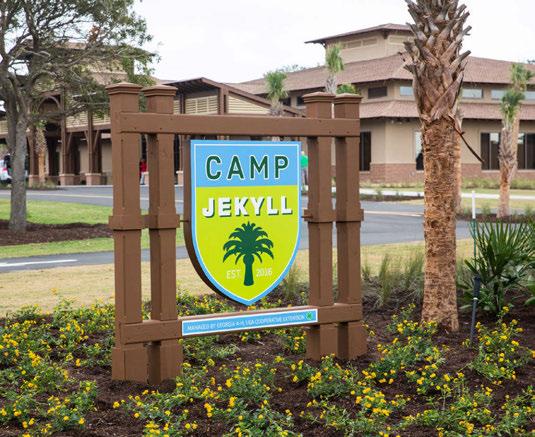
Additions and Improvements to
• Holiday Inn Resort
• Westin Jekyll Island
• The Cottages at Jekyll Island
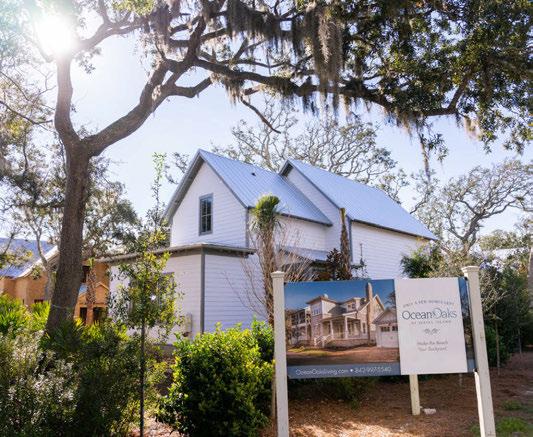
• Camp Jekyll
• Jekyll Ocean Club
• Home 2 Suites
• Ocean Oaks
• Courtyard by Marriott/Residence Inn
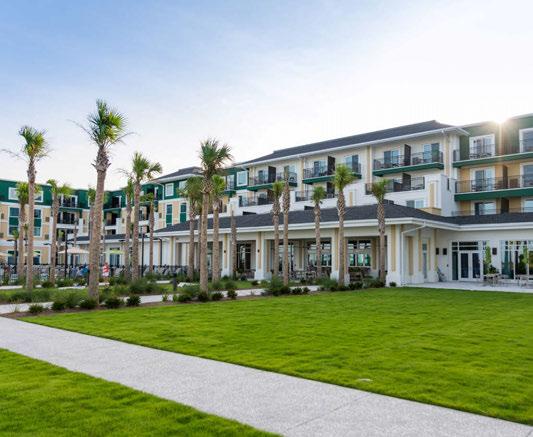
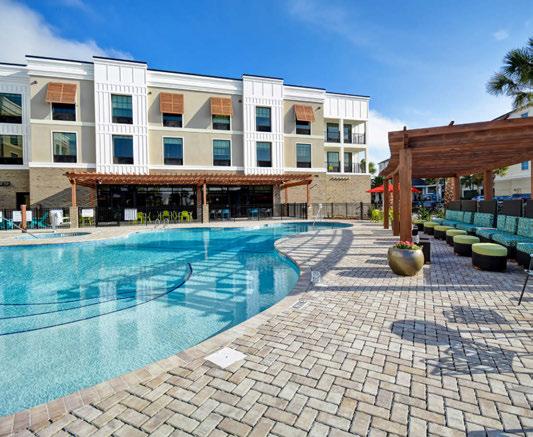
• Jekyll Island Campground

• Villas by the Sea
• Seafarer Inn & Suites
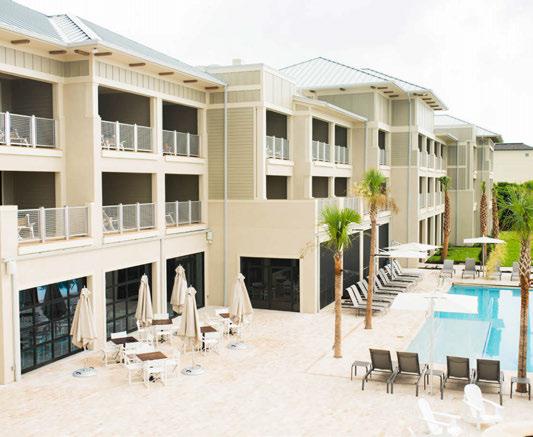
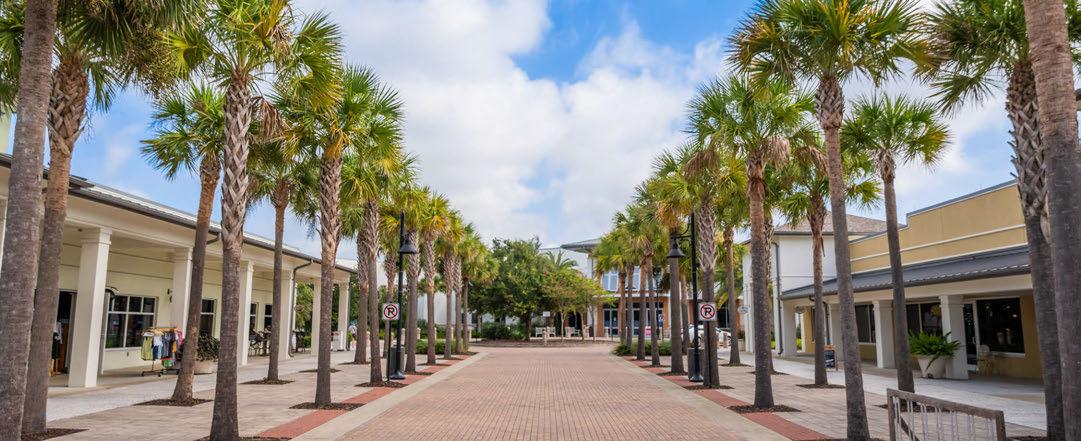
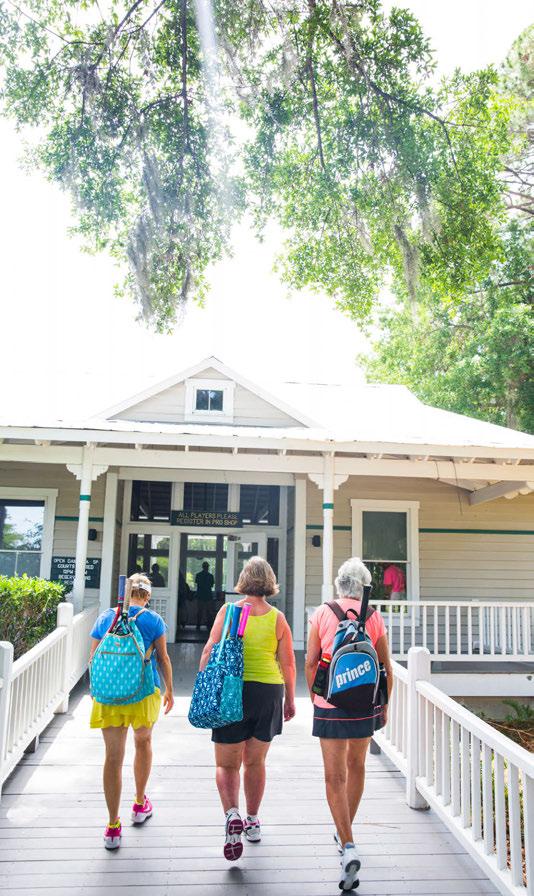
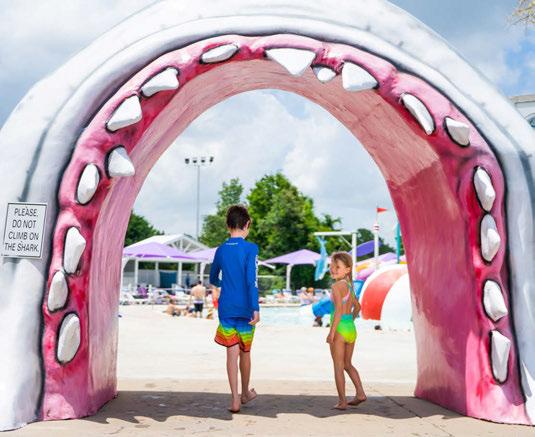
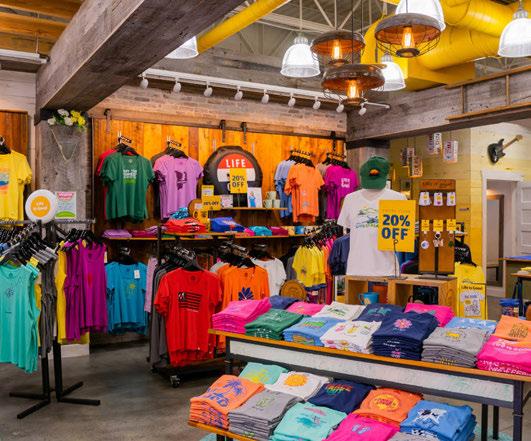
• Beach Village
• Life is Good
• Tennis Center
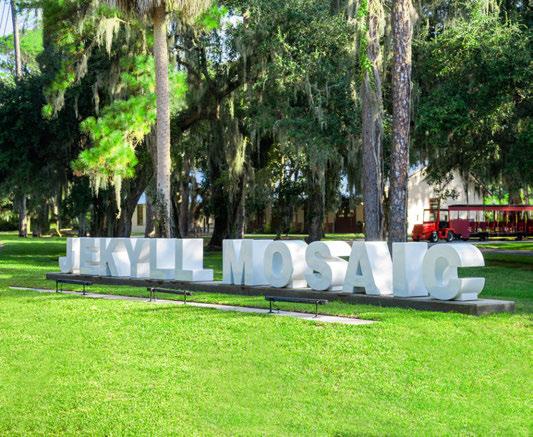
• The Mosaic
• Bike Paths

• Horton Pond
• Shark’s Tooth Cove at Summer Waves
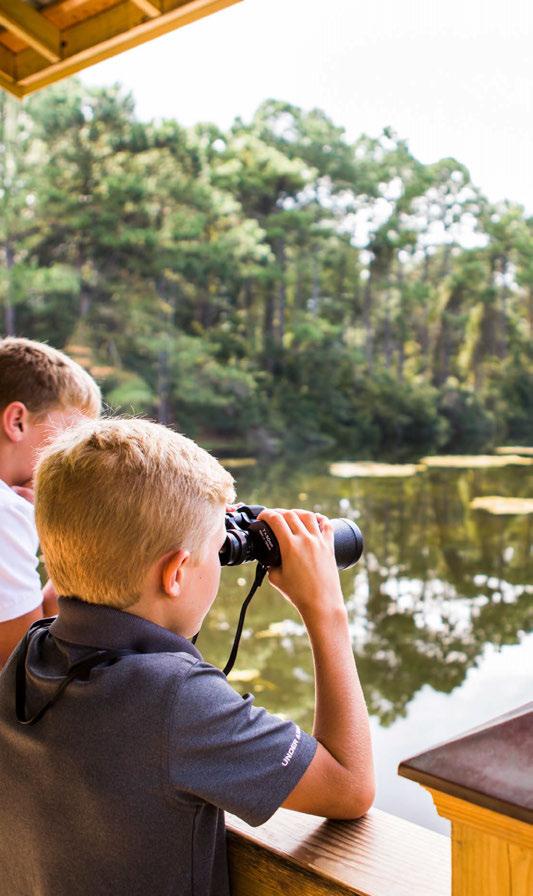
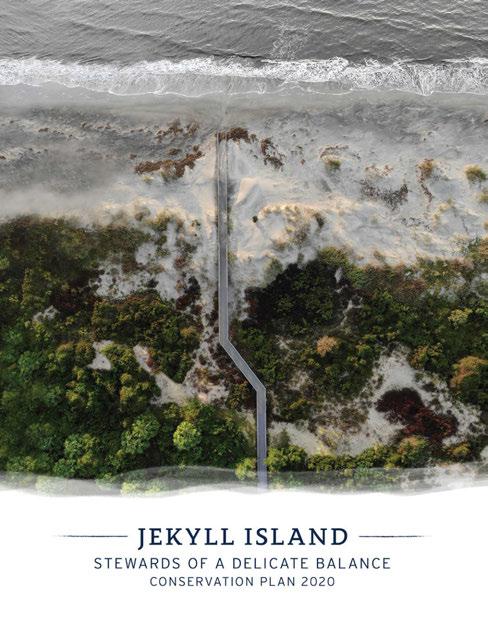
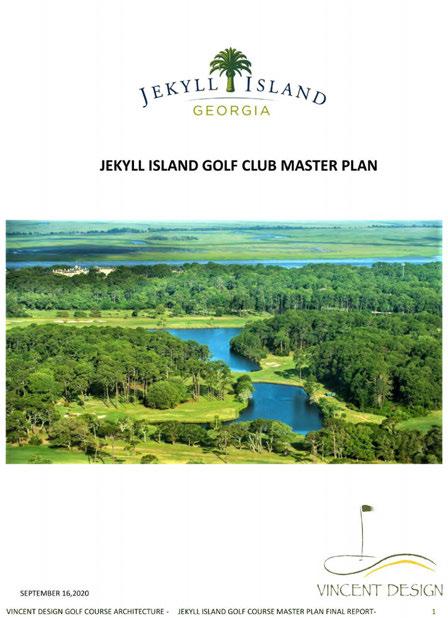


Jekyll Island
• Jekyll Island Conservation Plan
• Jekyll Island Carrying Capacity & Infrastructure Assessment
• Jekyll Island Golf Club: Assessment and Recommendations for the Jekyll Island Authority Golf Program
• Jekyll Island Golf Club Master Plan
• Comprehensive Disability Accessibility Assessment and Improvement Plan
• An Economic Impact Study of Georgia’s Jekyll Island

• Jekyll Island Island-Wide Transportation System Feasibility Report
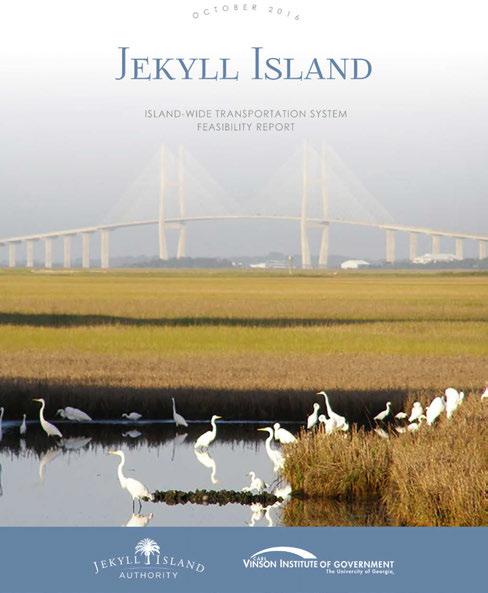

When the State of Georgia purchased Jekyll in 1947, the transition from private club to state park began. In 1950, the Jekyll Island Authority was created and “empowered to survey, subdivide, improve and lease as subdivided no more than one-third of the highland portion of Jekyll Island.” In 1952, the portion of the island available for development was redefined as the JIA was empowered to “improve not more than one-half of the highland portion.” The charge again changed in the early 1970s with an amendment to provide for “not more than 35 percent of the land area of Jekyll Island which lies above water at mean high tide.” In 1996, the legislature once again focused its attention on the development ratio, calling for the creation of a master plan that clearly delineated lands classified as Developed and Undeveloped. In 2007, limitations to current uses on the southern portion of the island were legislatively adopted.
Development of the 2014 Master Plan included an exhaustive process that sought additional legislative change to more accurately reflect not the percentage but the actual acres of land that were developed and the acres that were undeveloped. Defining Developed and Undeveloped, categorizing parcels, and agreeing on acreage took many months, but the result gave the most definitive framework to date, with an actual cap placed on the number of acres that could be developed on the island. It was agreed that 1,675 acres of land could be developed with 1,609 acres considered developed at the time. As a result of the 2014 Master Plan process, Act 480 was signed into law in 2014, which capped developable acreage to 1,675 acres of land and specifying 1,597 acres were deemed already converted to Developed land.1 The remaining 78 acres can be converted to Developed land as follows:
a) 12 acres for expansion of the existing
Maintaining the unique character of the island, which includes limits on development and carefully managing the boundaries where developed and undeveloped landscapes meet, is the top priority for residents, visitors, and the JIA.
campground; b) 46 acres for public health, public safety, or public recreation; and c) 20 acres for unrestricted use. In addition, any proposal of conversion of Undeveloped area to Developed land available would require public and legislative review. 2
Since 2014, 5.613 acres have been converted to Developed land for public health, public safety, and public recreation, and the 12 acres for the Jekyll Island Campground expansion were officially converted to Developed land. Therefore, a total of 60.387 acres remain available for development, with 20 of those acres for unrestricted use. 3

Maintaining the unique character of the island, which includes limits on development and carefully managing the boundaries where Developed and Undeveloped landscapes meet, is the top priority for residents, visitors, and
the JIA. Information gathered through the Carrying Capacity and Infrastructure Assessment, the Conservation Plan, and other studies done since the completion of the 2014 Master Plan has shown the importance of making data-driven decisions about changes on Jekyll Island. Information is a powerful tool, and whether the focus is on capital investment, maintenance, marketing, preservation, or conservation, the JIA should always rely on the best information it can in making decisions that could impact Jekyll. As noted in the Carrying Capacity and Infrastructure Assessment, “The JIA should continue to carefully prioritize existing capital improvement projects and be cautious when considering any new development.” Careful consideration should be given to how and when the remaining acreage is used. Similarly, the JIA will have to determine how to best manage the number of visitors to ensure that the
2 The 2014 Master Plan included the campground extension of 12 acres in its Developed acreage, establishing the Developed land at 1,609 acres rather than 1,597 acres as established in the legislation.character of the island and visitor experience are not negatively impacted.
As the JIA published in its 2018 Progress Report,
the primary goal of the Carrying Capacity and Infrastructure Assessment was to determine the number of people, vehicles, and development that the island can accommodate while still maintaining its unique character. By monitoring this data, the JIA will be able to be proactive; manage visitation and growth; and address challenges before they become problems.
By following the guidelines below, the JIA can ensure that Jekyll Island will continue to be a beautiful and natural place:
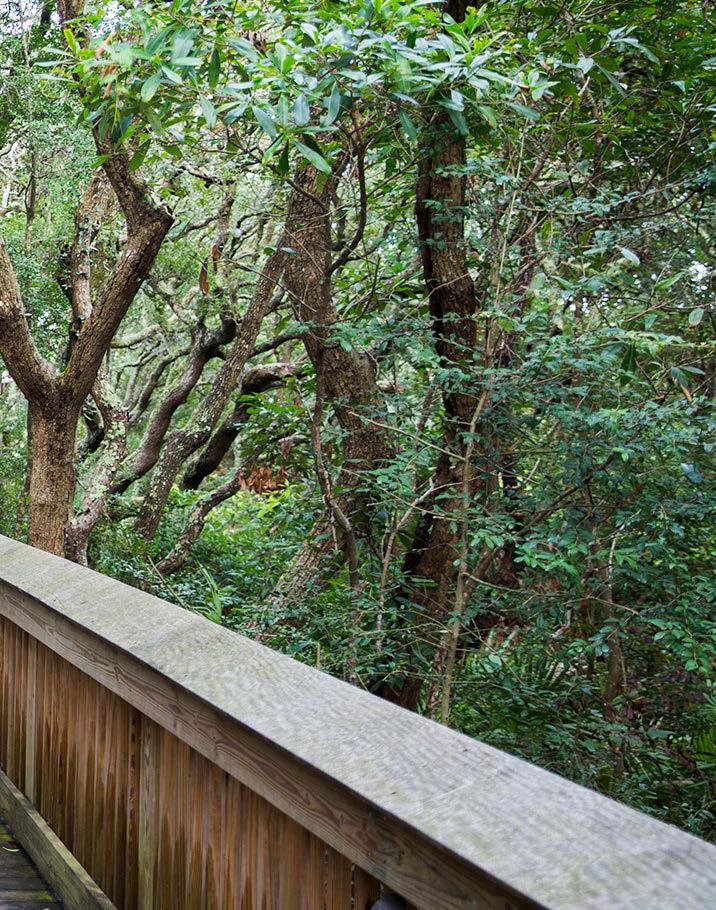
• limiting development and educating the public
• preserving historic assets and improving infrastructure
• encouraging alternative transportation and strengthening ordinances
• pursuing financial sustainability and enhancing conservation efforts.
The boundaries where the Undeveloped and Developed areas meet require careful management as do certain circumstances on undeveloped land. Examples of types of management include the following:
• Managers may allow a portion of a Developed area, such as a golf course rough, to re-vegetate to support conservation objectives if these objectives are also consistent with development uses.
• If the vegetated edge of an Undeveloped area encroaches upon a path and is deemed to be a safety concern, managers may prune vegetation to a point that safety is ensured for a practical amount of time.
• Critical components of the water and sewer system pass through Undeveloped land as does stormwater drainage infrastructure. The need to temporarily disturb Undeveloped areas to carry out management, maintenance, and modernization of these systems is essential. These efforts are infrequent, and the natural characteristics of the Undeveloped land remain the dominant condition.
• The safe, effective application of fire in Jekyll Island’s vegetation communities requires installation of temporary “mulch lines,” mechanically cut paths through dense vegetation. Such activities in support of fire management goals are consistent with Undeveloped land classification.
275,000 18k hours
Historic and Cultural Resourcces
$723,000 Site of Memory
• Since 2014, parking revenue has increased by 51%, providing critical funding to support conservation, maintenance, and other operations.
• The Jekyll Island Campground occupancy rate neared 80% in FY2021, and revenues topped $2.1 million.
• In July of 2021, the hotel occupancy rate was nearly 86%.
• Convention Center revenue was down 46% in FY2021 compared to FY2020 as the impact of the pandemic continued.
• Since 2014, nearly 275,000 people have participated in Historic District tours.
• Historic resource programs have benefited from more than 18,000 hours of volunteer assistance since 2014.
• Museum revenues totaled more than $723,000 in FY2021, an increase of 22% over the previous year.
• In 2018, the Wanderer Memory Trail opened and was designated a UNESCO Slave Route Project “Site of Memory.”
• July of 2021 saw an all-time monthly high of 23,217 visitors to the Georgia Sea Turtle Center.
• More than 970 sea turtle patients have been treated at the GSTC since 2007.
• In 2018, 9,000 linear feet of rock revetment was restored to its original design.
• In 2019, 6,500 truckloads of sand backfilled the revetment with more than 130,000 plants added for additional restoration and stabilization.
• Summer Waves generated revenues of over $2.1 million in FY2021.
• Golf memberships more than doubled in FY2021, and that is attributed to increased fees at other area clubs.
• Miniature golf and bike rentals saw an increase in revenue over the previous fiscal year of 75%.
• Jekyll Island has added, rehabilitated, or widened more than 4.25 miles of multiuse paths since 2014, resulting in nearly 22 miles of paths.
• Since adding fuel sales in FY2020, the airport has generated more than $80,000 in sales.
• The number of septic systems on Jekyll has been reduced from 19 to 9 since 2018, a priority identified in the Carrying Capacity and Infrastructure Assessment.
• There are more than 40 electric vehicle charging stations on Jekyll Island.
• In 2019, a private company constructed a one mega-watt solar farm on the decommissioned, capped Jekyll Island landfill. The lease of this land will generate more than $730,000 in payments over the next 30 years.

This JIA Board recognizes the importance of limiting residential and commercial development on Developed land not currently or previously used for those purposes not only manage the capacity of residents and visitors, but allow the JIA to preserve the unique natural environment that makes Jekyll so special. This must be the standard carried forward into the future.
The adoption of the 2014 Jekyll Island Master Plan established the total number of acres classified as Developed as well as the number of acres that could be developed on Jekyll Island in the future. It also established the number of acres that were classified as Undeveloped. As noted in the 2014 plan, based on the recommendations of the master plan task forces and additional work with the JIA staff, the land use classifications of Developed and Undeveloped were adopted. The terms, as noted in the 2014 plan, are based on national standards while still allowing for the uniqueness of Jekyll Island. The core element of classifying land as either Developed or Undeveloped is the use or actual function of the land. In total, 1,597 acres were identified as Developed with an additional
12 acres set aside for campground expansion. Therefore, the 2014 Master Plan indicated 1,609 acres were classified as Developed.
The 2014 Master Plan also recommended and, upon legislative approval, set the maximum number of developable acres at 1,675 acres. However, in updating the master plan, six categories of correction were made, including consistency with the conservation plan, which resulted in a reduction of the total number of acres currently defined as Developed to 1,599. These corrections resulted in a voluntary reduction of total acreage to potentially be defined as Developed to 1,659.4 acres, a net decrease of 15.8 acres, while still allowing the flexibility of converting Undeveloped acreage to Developed
acreage for public health, public safety, and public recreation as well as unrestricted uses as outlined below.
The 2014 Master Plan also established a potential 66 acres of land available to the JIA for future development, with 46 acres restricted to public health, public safety, and public recreation purposes – not commercial or residential uses. Twenty acres are then available for unrestricted uses, which can include carefully considered commercial or residential development. Furthermore, it is established that anytime any number of the 66 acres are considered for development, the JIA will follow the process outlined in the Jekyll Island legislation (O.C.G.A. § 12-3-243.1). It is important to note that the JIA, as noted in the 2014 plan, focuses its efforts on redevelopment opportunities within the areas currently defined as Developed while allowing flexibility to address future needs including desirable recreational opportunities. This JIA Board recognizes
the importance of limiting residential and commercial development on Developed land not currently or previously used for those purposes to not only manage the capacity of residents and visitors, but to allow the JIA to preserve the unique natural environment that makes Jekyll so special. This must be the standard carried forward into the future.
Since the adoption of the 2014 master plan, in addition to the 12 acres reclassified as Developed for campground expansion, 5.61 acres of the 46 acres available for public health, public safety, and public recreation have been reclassified from Undeveloped to Developed to provide for a public safety complex and a Georgia Power Substation. None of the unrestricted 20 acres has been converted for any unrestricted use. Therefore, overall acreage remaining for development stands at 60.39 acres. It is important to note that as the JIA considers future uses of Developed, Undeveloped, and potential
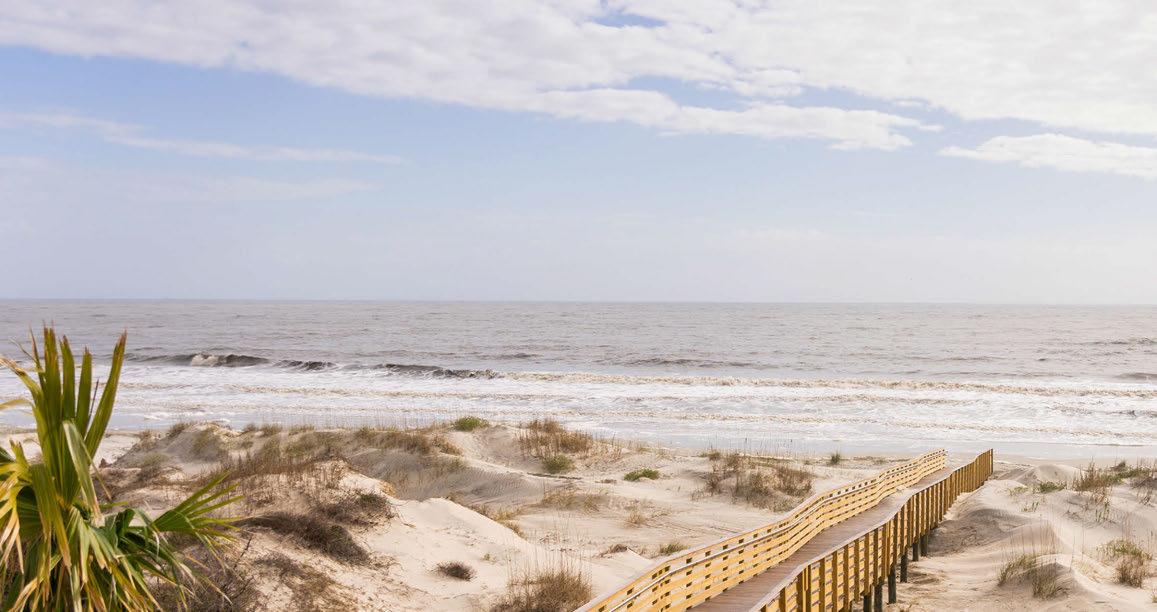
redevelopment of land, it must follow the legislatively established process. It is also important to note that even though there are acres available to be used for additional development, there is no timeline or even guarantee that a change in use from Undeveloped to Developed will ever come to fruition.
Jekyll Island has no zoning and no ordinances that address density limitations or changes in land use from one type of development to another. Jekyll Island is, however, in a unique position because it is a state park and not a municipal government. The JIA must consider the appropriate tools to protect existing uses and ensure suitable scope and scale of future development or redevelopment on the island.

Currently, how land defined as Developed is redeveloped is at the discretion of the JIA staff and the JIA Board. There is no public process required for redevelopment beyond public comment before the Board. The JIA must consider creating a process that would invite public comment and discussion on any significant change in use. Any development or redevelopment must carefully consider how a change in use will impact surrounding uses, the character of the area, and effect the overall carrying capacity of the island. The JIA should consider a review of land uses within the Developed category to best balance future land-use decisions.
As part of the 2014 master planning process, Developed and Undeveloped land was classified according to national standards and appropriate land-use definitions. The following land-use classifications have been adopted:
DEVELOPED: land that is built upon or paved (includes roads and bike paths); land that has been disturbed and no longer maintains original, natural function (golf course and some dirt roads); land or other areas that do not maintain ecological integrity (golf course ponds, borrow pits). Other specific examples include the following:
• Dirt roads in use, whether by the JIA or the general public
• Multi-use trails and pathways whether paved or pervious surface
• Utility easements
• Firebreaks intended to protect residential areas
UNDEVELOPED: land that remains free of the built environment (beach above mean high tide and lots on the south end of island); land where the built environment does not impact its ecological integrity (sand dunes and the associated walkways); undisturbed tree canopy; and wooded areas within the golf course larger than one acre in size. Other specific examples cited include the following:
• Undisturbed forest (canopy and understory intact)
• Wooded acres with canopy intact; little or no active use (includes protective firebreaks)
• Dirt roads not in use and serving no practical function with the exception of firebreaks
• Dirt footpaths less than six feet in width
• Dunes and beach above the mean high tide (including crossovers)
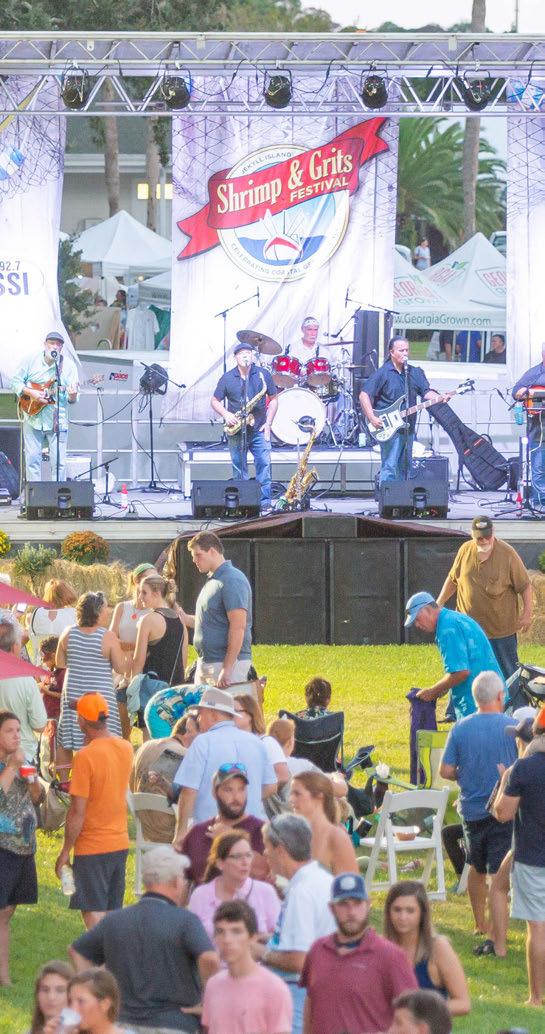
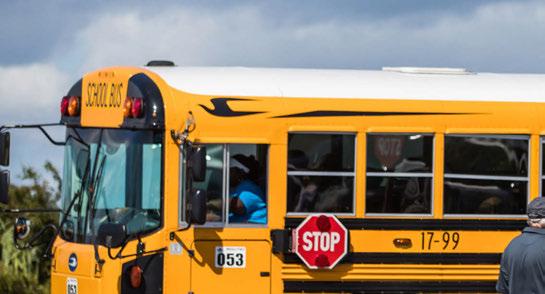
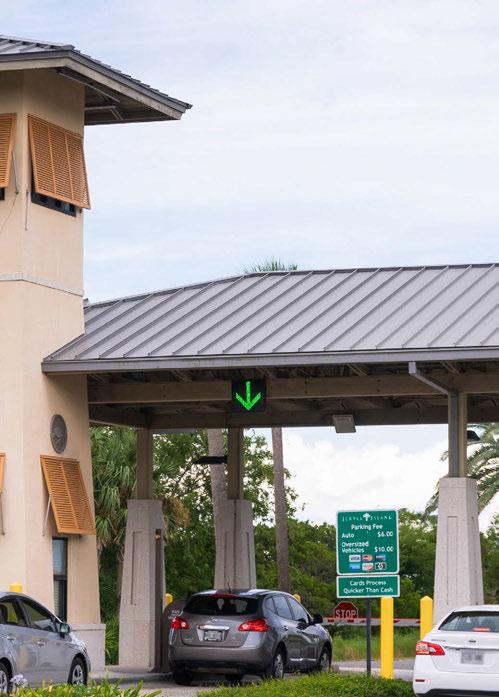
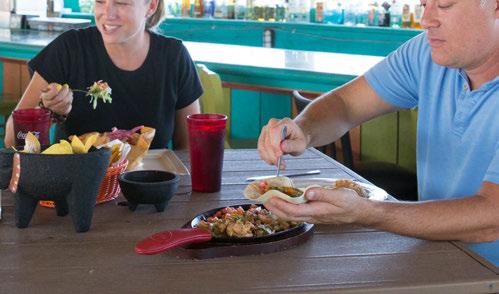
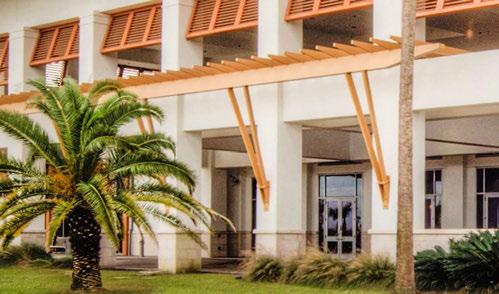
Jekyll Island is unique among Georgia’s barrier islands as a beloved gem embraced for its beauty, its history, and its commitment to environmental stewardship that includes the protection of approximately two-thirds of the island from development. Visitors and residents are treated to exceptional experiences at the Mosaic, at the Georgia Sea Turtle Center, and in the Historic District. Recreation enthusiasts find miles of bike paths and trails, golf courses, tennis courts, and the Summer Waves Water Park. The beauty of the marshes and Driftwood Beach is unmatched, and the variety of accommodations, including the popular Jekyll Island Campground, provides for a wide range of price points.
The island itself is a state park, with management and stewardship responsibilities legislatively assigned to the Jekyll Island Authority. However, the JIA does not receive funding from the State of Georgia for operations and maintenance and instead relies on a variety of administration and enterprise funds to meet those expenses.
Economic sustainability is achieved through sound investment in Jekyll’s infrastructure and amenities, and a continuous focus on the visitor and resident experience, customer service, and commitment to the Jekyll Island vision.
The first experience for any visitor to Jekyll Island is the gate. Changes and improvements to the parking fee process, based on recommendations made in the 2018 Jekyll Island Carrying Capacity and Infrastructure Study, were introduced in May 2020. As described in the 2020 Jekyll Island Progress Report, the new system includes intuitive touch screens, improved payment kiosks, and an enhanced online option to purchase or renew permits. The new system also provides a more accurate count of vehicles coming onto the island each day. However, the vendor needs to address some issues.
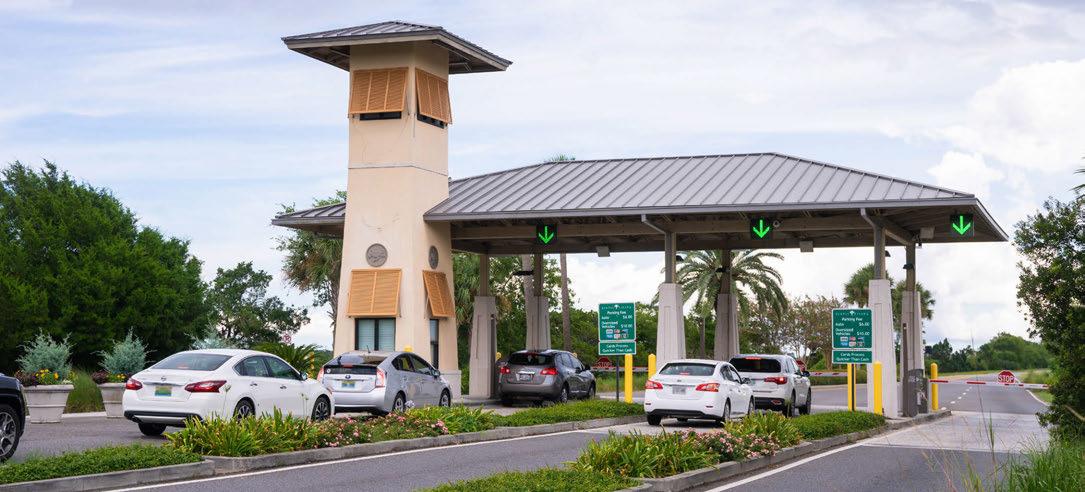
The new system offers both point-of-purchase and online purchase options. While the Jekyll Island website provides video instructions for point-of-purchase daily and multiday passes, other aspects of the process are confusing. An improved frequently asked questions page would help eliminate confusion. The JIA should encourage the vendor to address such concerns, including annual pass options, and the questions of patrons to ensure the system is easy to use and provides a good first impression.
A second concern is delays and backups at the gate. Encouraging more online purchases and discouraging point-of-purchase would help eliminate this issue. The JIA should increase the rate structure to control numbers as recommended in the capacity study.
In the future, as technology improves and point-of-purchase systems can more fully interact, the JIA should consider modifications that would allow visitors to pre-purchase parking through a coordinated effort with hoteliers and the convention center as another means to reduce delays and backups at the gates. Although the hotels are independently owned and operated, this kind of integrated effort could improve the overall guest experience.
At some point, the JIA has to consider how many visitors is too many; that is, what is the maximum number of attendees before the event experience is diminished by the crowds?
The parking fee is an important component of the JIA budget and is projected to contribute 16% of overall revenues in FY 2022. Respondents to the Jekyll Island Survey support the parking fee as a funding mechanism for the operations, maintenance, and conservation efforts of the JIA, with just over 91% agreeing or strongly agreeing with its appropriateness. Almost 54% of respondents agree or strongly agree that dynamic pricing— that is, increasing the parking fee for certain high-visitation days—is an appropriate tool to manage the number of people on the island. It is worth noting that dynamic pricing is already used for events up to four times a year.
Although support for dynamic pricing is not overwhelming, the Carrying Capacity Assessment identified it as a tool that may control the number of visitors if the pricing difference is enough to influence behavior. At some point, the JIA has to consider how many visitors is too many; that is, what is the maximum number of attendees before the event experience is diminished by the crowds? For example, charging $2 more may not make an impact on whether someone attends, but doubling the fee might. Any potential change in parking fees should be well publicized in advance of any event. The JIA may consider requiring pre-paid parking (purchasing online before arrival) for special events. This type of advance reservation is becoming more commonplace as a tool to control visitor numbers and maintain high-quality experiences. For example, Great Smoky Mountains National Park now requires a reservation to visit Laurel Falls, along with a $14 parking fee.
The JIA should also consider developing partnerships with other entities to provide a circulating shuttle service from off-island locations for high-traffic events, as noted in the Carrying Capacity Assessment. If the overall goal is to manage traffic on the island, a central parking area with shuttles to events and other venues, also noted in the Carrying Capacity Assessment, could reduce the volume of cars driving around the island.
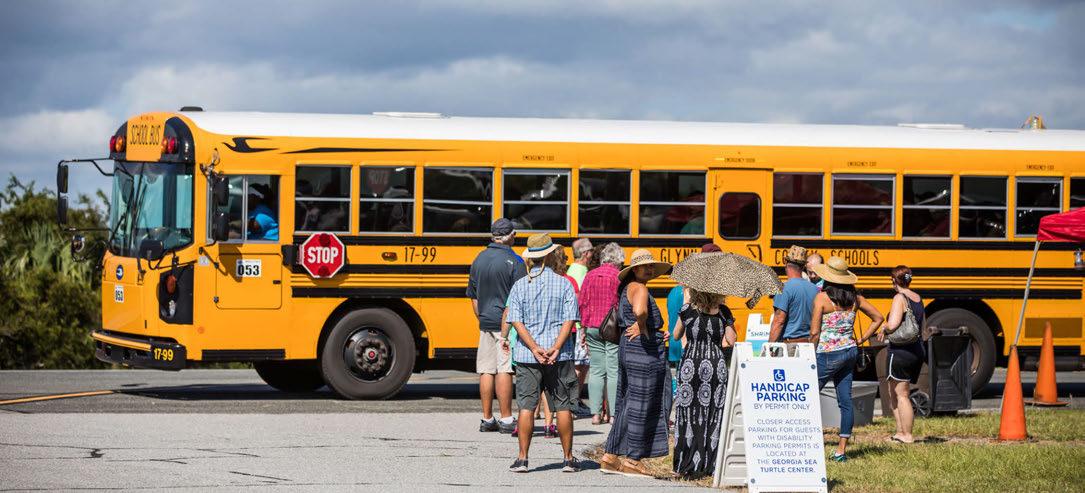
The Jekyll Island Convention Center is a critical hub for meeting and event activities on the island and is also an engine for other economic activity. Since FY 2014, the number of groups and events hosted at the center has steadily grown, from 147 events with 102,330 attendees to 193 events with more than 126,000 attendees in FY 2019. Hotel capacity has increased (1,409 hotel rooms) to support large meetings and events, but the total is still below the historically high room count of 1,528. While there are more home rental opportunities than in the past, event planners favor hotel blocks versus individual homes for convention and meeting-related activities. Not surprisingly, the pandemic has affected convention center activity. The facility and hotels took a hit in FY 2020, hosting only 143 groups. That number declined even further in FY 2021 to 118 groups and fewer than 40,000 attendees, the lowest figures since FY 2016. The convention center had a net operating loss of $934,864 in FY 2021.
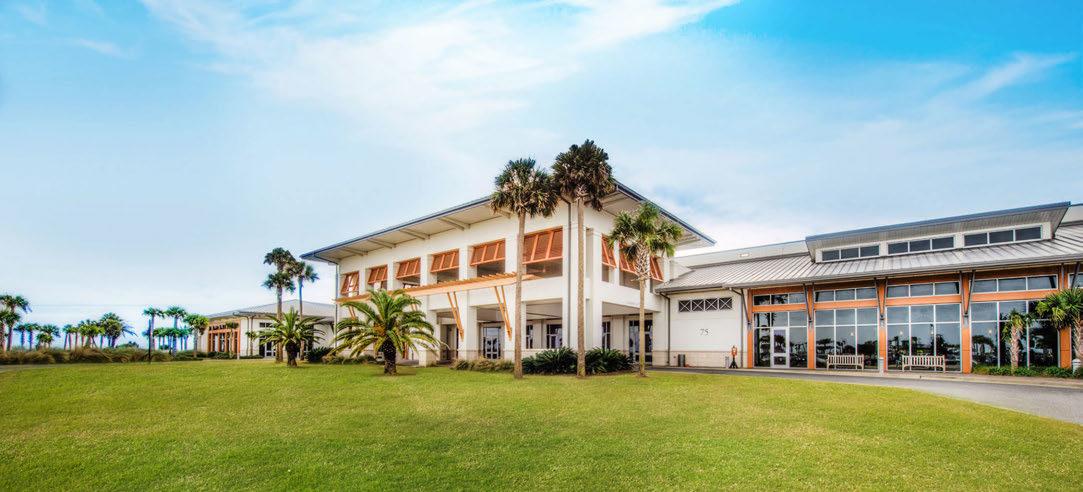
As the world begins to emerge from the COVID-19 pandemic and it becomes safe to meet face-to-face in large convention settings, Jekyll Island is wellpositioned to not only regain previous business but to pursue new user groups. However, post-pandemic meetings may look different than those pre-March 2020. The JIA should be prepared to rebuild its convention center book-of-business with attendee and staff health and safety in mind, and be prepared to provide remote connections, while simultaneously supporting in-person participation for meetings and conference events. Additionally, and as noted in the Carrying Capacity Assessment, the convention center can increase its revenue by expanding the number of groups that rely on the full array of its offerings. Marketing the capabilities of the convention center and the assets of the island not only for meeting attendees but for those who might travel along to enjoy the destination will also be key to creating additional economic activity. The convention center is a key driver of economic sustainability and a return to steady business growth will be critical over the next several years.
As Jekyll Island visitation ballooned in the spring and summer of 2021, it became obvious that the capacity of restaurants on the island to meet the demand of guests and residents was fraught with issues. From a staffing perspective, restaurants were, like many sectors of the economy nationwide, struggling to fill open positions. Some guests, still aware of and impacted by the ongoing pandemic, were seeking take-out options that the Jekyll restaurants were not able to fulfill. In addition, the hours of Jekyll Market and many of the restaurants simply do not meet the needs of today’s travelers. The pandemic shined a light on what may be an ongoing issue, but it will take several years to determine if the visitation numbers from the last quarter of FY 2021 are the new normal and thus warrant significant changes.
Even though the JIA requires all hotels to provide some food and beverage service, the Master Plan Update Survey showed that visitors and residents would like to see more food service options on Jekyll including grab and go, carry out, and delivery. While the survey revealed that the majority of respondents agree that Jekyll offers a wide variety of food options, residents in attendance at the town hall meeting indicated a desire for greater ethnic diversity in dining options.
The JIA should explore the benefits of extended restaurant hours, at least during peak season, as well as extending the hours of operation of Jekyll Market and other Beach Village stores. The JIA should also explore the potential for food truck events or a dedicated food truck area to bring in a wide variety of food options as well as to provide a take-out option for residents and visitors. While some express concern for how food trucks impact brick-and-mortar restaurants, the Food Truck Association of Georgia notes that food trucks actually help draw people to restaurant and shopping areas, increasing pedestrian traffic for surrounding businesses.4 Beyond the addition of food trucks, existing restaurants should consider how providing take-out and delivery options might benefit their businesses or how they might jointly develop a delivery service. The convention center should consider how it might provide take-out options for additional special occasions and during unusual circumstances such as those presented by the COVID 19 pandemic. Although primarily a function of the private sector, the demand for food services is evident and must be met.
4 foodtruckassociationofgeorgia.co/facts-vs-fiction/
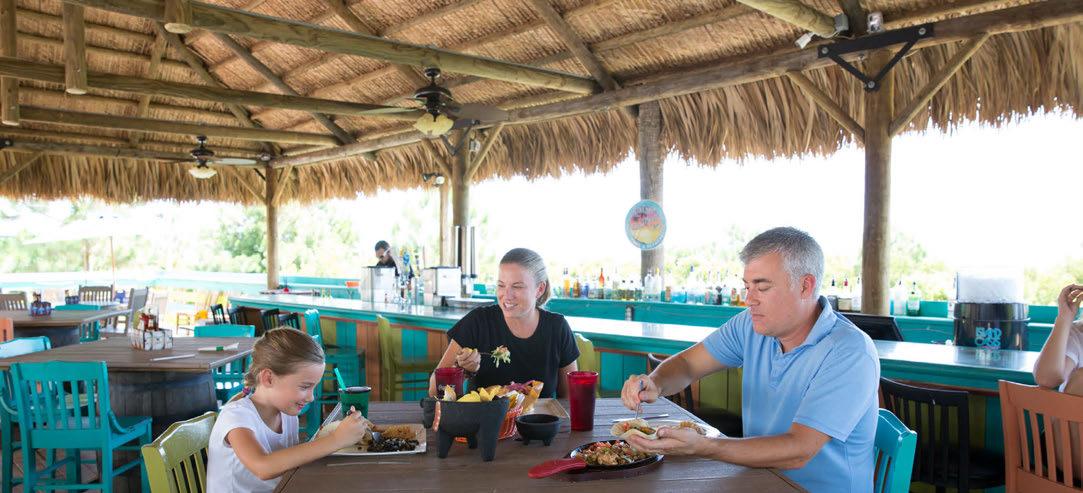
Jekyll Island’s “big four” events are well loved and well attended. The Turtle Crawl, Fourth of July, Shrimp and Grits, and Holly Jolly Jekyll provide seasonal draws that have seen significant growth in recent years. The number of people participating in the Turtle Crawl has nearly doubled. The Tree Lighting Festival, which began as a one-day event, was expanded to Holly Jolly Jekyll in 2019 and runs through the holiday season, from Thanksgiving to New Year’s. The inaugural event attracted more than 80,000 visitors. The pandemic, like Hurricane Irma in 2017, meant the cancellation of events in 2020 for the health and safety of potential visitors and staff and volunteers. Moving forward, it will be paramount to consider how the everincreasing number of event participants impacts Jekyll Island overall.
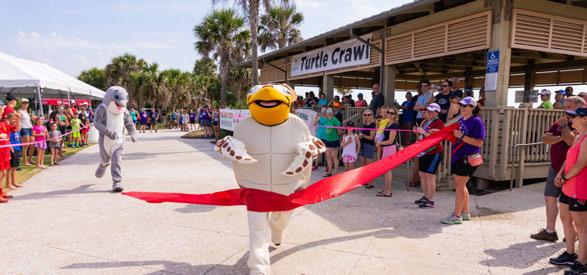
The Carrying Capacity Assessment identified several considerations for high-visitation and event days that the JIA should explore. These recommendations seek to reduce the number of vehicles on the island at a given time and provide ways to move visitors around the island that do not require personal automobiles. Alternatives that rely on off-island parking and a shuttle system to transport visitors onto and around the island should be considered. Another option is a parking reservation system that controls the number of people at a specific location for a given amount of time.
Jekyll has a limited number of parking spaces and areas that are appropriate for overflow parking. Given the constraints that exist and the need to protect the natural resources and character of the island, controlling the number of cars on the island at a given time will be important. The JIA should consider implementing “premium parking” options, whereby visitors pay an additional fee to park in a particular area for a set amount of time in addition to an on-island trolley or off-island shuttle system. A shuttle is already successfully used for Shrimp and Grits Festival and should become the norm in an effort to control traffic during large events.
The JIA must also consider how multiday events rather than single-day events would encourage participation to be spread over multiple days rather than just one day. Not only would this support reducing the overall number of visitors on the island at one time, but it would also potentially improve visitor experience.
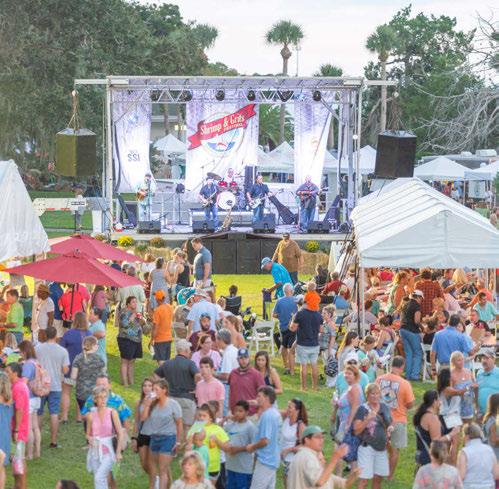

The JIA must also consider how multiday events rather than single-day events would encourage participation to be spread over multiple days rather than just one day.
The Jekyll Island Campground is the largest state-owned and operated campground in Georgia, with 179 campsites – 167 with hook-ups and 12 tent sites. When compared to other state-operated campgrounds, Jekyll had the third-highest occupancy rate in FY 2021 at 79%. It started FY 2022 strong with a July occupancy rate reaching above 84%. The JIA has shown a commitment to continuously improving the campground sites and facilities to meet the ever-growing demand. In the 2014 Master Plan, 12 acres were set aside to use for campground expansion.

In the 2014 Master Plan, 12 acres were set aside for campground expansion and were converted to developed land in 2019, thus, the campground is in the expansion process. Long-range planning includes the addition of four new bathhouses, for which funding for three has been secured; up to 54 new pull-through campsites; a new camp store; and laundry services. As a result of the expansion, additional open spaces will be created in the existing campground. Travel by recreational vehicle has become increasingly popular and shows no signs of slowing down. In 2020, the RV industry saw a nearly 40% increase in vehicles delivered. Having available, affordable sites and the supporting infrastructure in place will continue to be important to accommodate the RVing and camping public. However, once the 12 acres are built out, the JIA will have to carefully manage the numbers to accommodate demand without diminishing the experience, as there will be no additional campground capacity. Toward that end, the JIA should develop an Operational Management Plan to ensure the fully built-out Jekyll Island Campground meets the needs and expectations of visitors and the JIA.
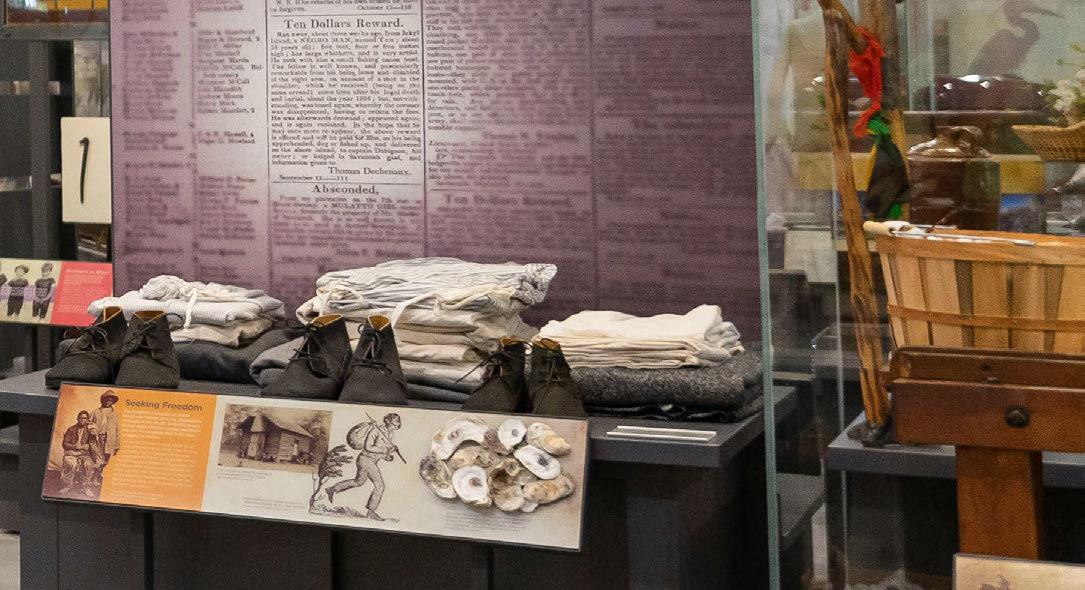
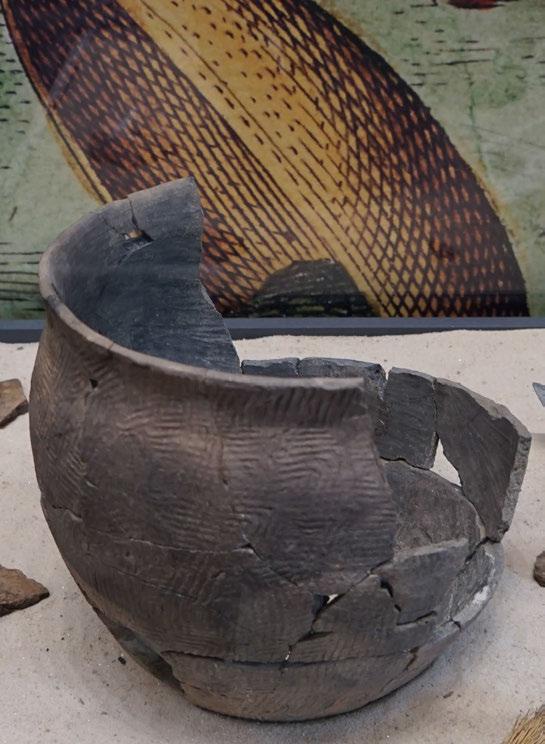
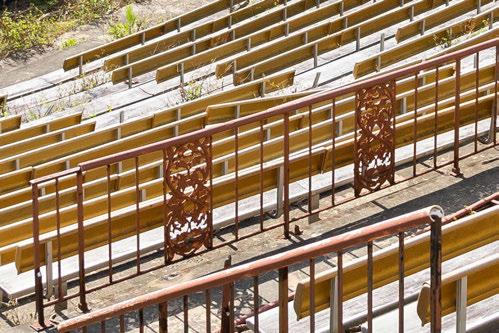
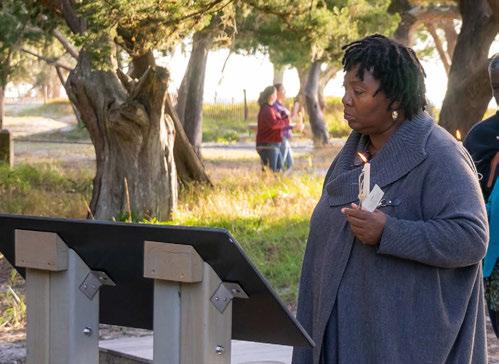
An impressive 98% of survey respondents indicated that they enjoy visiting the Jekyll Island Historic District. The district, the Wanderer Memory Trail, the Native American artifacts, and stories of others who have occupied the island over time highlight the rich and varied history and culture of Jekyll Island. While many visitors focus on the historic homes and buildings highlighted by the grand Jekyll Island Club, there are other important stories to share. With the opening of the Mosaic Jekyll Island Museum in 2019, more than 9,000 visitors learned about Jekyll beyond the heyday of the Jekyll Island Club, looking back to the Native American history and forward to the lives of Black Americans on the island, showcasing important moments as well as the day-to-day life of residents. The number of visitors to the Mosaic more than doubled in its second year of operation.
With funding support from the State of Georgia, the JIA has also increased the ADA accessibility of and made general safety enhancements to historic structures to more fully engage visitors of all abilities. The JIA also continues ongoing efforts to restore and preserve historic cottages within the Historic District. Maintaining and preserving these unique resources is critical as they contribute significantly to the character of the island.
As noted in the JIA FY 2021 Strategic Update, the authority “preserves and manages 35 historic structures and seven support structures in the National Historic Landmark District,” which is larger in acreage than Colonial Williamsburg. There are additional historic and archaeological sites throughout the island managed by the Historic Resources Department of the JIA. The Historic District is wellknown, and the number of visitors has grown steadily though it also felt the decline in visitation from the COVID 19 pandemic.
As noted before, 98% of survey respondents enjoy visiting the Jekyll Island Historic District. Given the popularity and importance of the district, the JIA should focus on the objectives presented under Goal 4 Summary — Enhance Historic Resources — in the strategic update. The objectives are as follows: maintain historic structures and manage cultural resources; ADA assessments and improvements; increased awareness of Jekyll’s history and visitor attraction to the Mosaic; adaptive reuse of Gould Casino, Villa Ospo, and Villa Marianna; public tours of Hollybourne Cottage; improved sustainable business model for Historic District operations; historical interpretation enhancement; and records inventory in accordance with State of Georgia requirements. Focusing on these established objectives will ensure the proper protection, restoration, and enhancement of the Historic District and other culturally significant assets.
The objectives also note the need to recognize the many volunteers who significantly contribute to the Historic District restoration efforts. Skilled volunteers provided more than 3,500 hours in FY 2019, and they are an invaluable asset to the JIA.

Many visitors to Jekyll are looking for an experience beyond the beach. More than 90% of survey respondents agree or strongly agree that Jekyll should introduce events that promote and highlight the historical and environmental uniqueness of the island. Historic tours attracted nearly 25,000 participants in FY 2021, and there were more than 2,000 educational program participants. Although those numbers were down significantly from previous years, attendance is likely to return to prepandemic numbers of more than 41,000 tour participants and 5,500 program participants, continuing a pattern of sustained growth over time. However, it will be important to provide a variety of programming that keeps visitors coming back year after year.
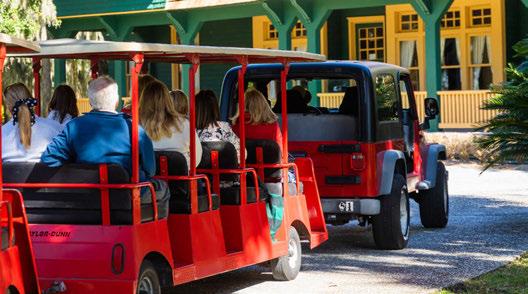
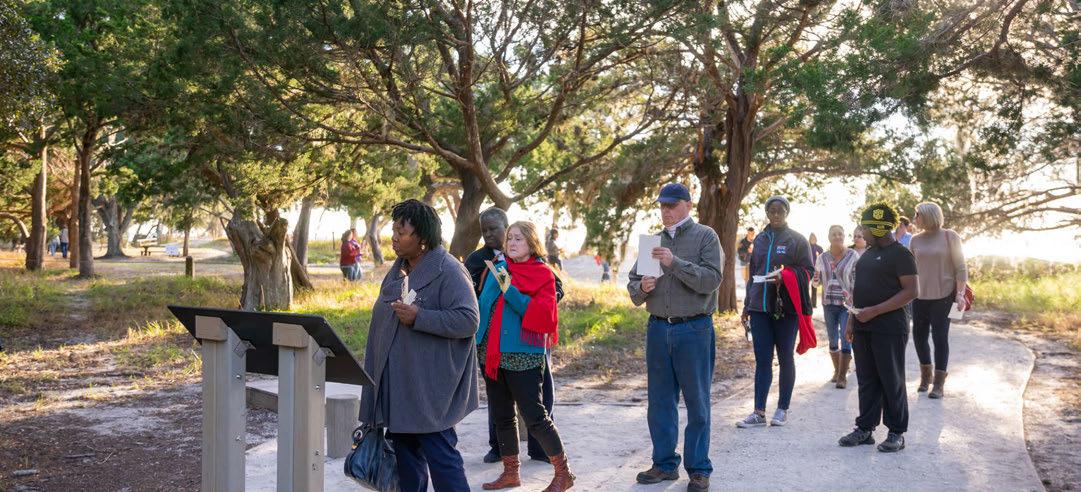
Jekyll has such intriguing stories to tell. As visitors and residents seek year-round activities, creative lectures or evening presentation experiences would provide opportunities to learn about the history of the island before there was a Historic District. As noted in the FY 2022 Strategic Update, “New programming options may include wine walks, improvements to the Rockefeller experience, gallery talks and lectures, cocktail evenings, summer camps, more Christmas/holiday programs, more period dress for interpreters….” The JIA also recognizes that it should consider “broader audiences including kids’ activities, school programs, hands-on archaeological research, and learning for adults.” Preservationists, scholars, authors, and local legends with various perspectives and diverse knowledge of the island could engage with visitors and residents throughout the year. A wide variety of topics and a diverse group of presenters will encourage participants from Jekyll and beyond.
Originally built in 1972, the Jekyll Island Amphitheater delighted young and old alike for decades. From musical acts to theatrical performances by students, members of theater troupes in residence, from Florida State, then the University of Georgia, and finally Valdosta State University, the amphitheater hosted thousands of visitors and provided a unique environment for outdoor entertainment. Since its closure in 2005, the facility has increasingly shown signs of aging and disrepair. In the past several years, renewed interest in the restoration and rehabilitation of the amphitheater has grown. Visitors and residents alike are seeking activities, including the cultural arts, to enhance their daily experience on Jekyll. Restoration of the amphitheater ranked high on the Master Plan Update Survey among those who provided comments.
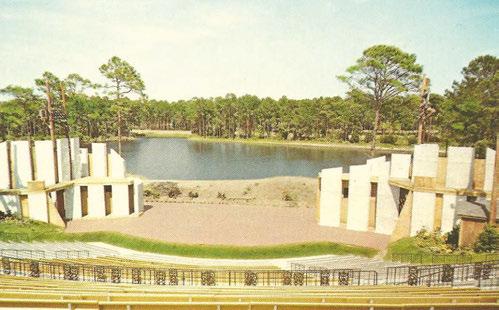

While the JIA believes the site holds outstanding potential for restoration to bring live theater and other events back to the island, a private partner would be better suited to evaluate and assess the potential of the amphitheater and to make the necessary investments for operation to ensure long-term viability. An improved facility in such a unique setting would further enhance the activities and experiences available on Jekyll. Thus, the Jekyll Island Authority has issued a formal request for proposals for an interested party to lease, redevelop, promote, and operate the amphitheater.

In addition to the Historic District, and as included in the 2020 Conservation Plan, Jekyll boasts 54 known archaeological sites located on property managed by the JIA: 21 prehistoric sites, 14 historic sites, eight sites that have both historic and prehistoric elements, and seven sites with unknown cultural affiliation. Two additional sites have yet to receive a State Site Number for listing with the Georgia Archaeological Site File. As Jekyll faces increasing threats from extreme weather and the realities of sea-level rise, strategies to preserve and protect historic resources must be considered.
Ensuring that the significant historic and cultural resources of Jekyll Island are preserved and protected from extreme weather events and sea-level rise is critical. Partnerships with university researchers and graduate student programs should be a priority to monitor the known archaeological sites to fully document and safeguard those resources. The JIA Historic Resources staff should also continue pursuing partnerships and working to identify and survey additional sites, with a particular focus on those that may face greater environmental impacts. Opportunities for external funding should be identified, including grants that can be collaboratively developed with external partners, to support the protection and preservation of archaeological resources now and in the years to come.
Ensuring that the significant historic and cultural resources of Jekyll Island are preserved and protected from extreme weather events and sealevel rise is critical.

Located west of the Jekyll Island Airport, remnants of a Confederate battery that was constructed in late 1861 remain. The battery was abandoned and then dismantled by the Union Army in 1862. Contained within the airport property, the Confederate battery is noted by a historic marker that lies outside the property but within the viewshed of the remaining earthworks. Due to simultaneous conversations regarding airport modifications during map development, the 2014 Master Plan map erroneously shows the Confederate battery as Developed, and the 1.6 acres are included in the total number of Developed acres on the island. However, no alterations to the battery have occurred.
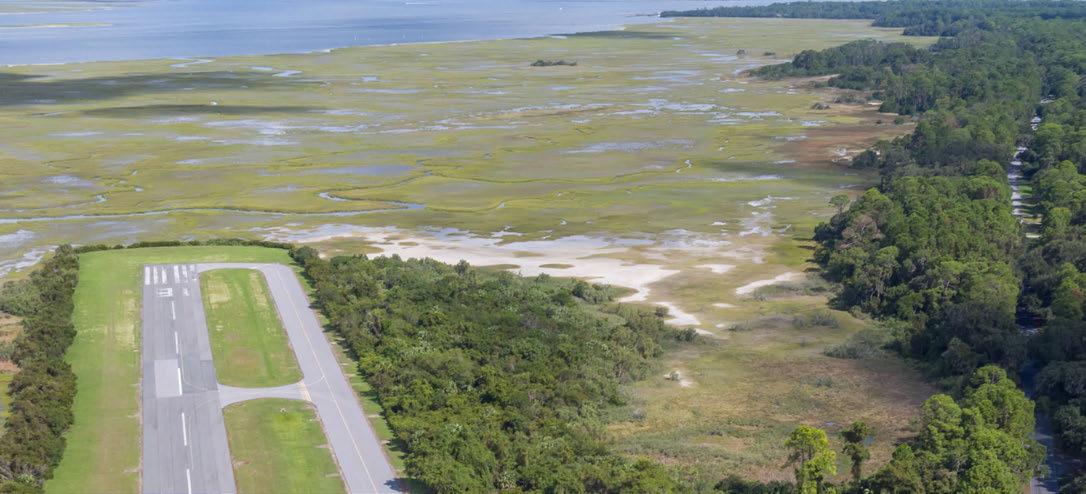
Given that the Confederate battery remains a historically and culturally significant remnant on the island and has not been altered in any way that would support its classification as a Developed property, the 2014 Master Plan map was erroneous in classifying the 1.6 acres as Developed. The updated map, included in Section 12, now indicates this as an Undeveloped parcel. This change in status protects its historic significance and accurately reflects its future use.
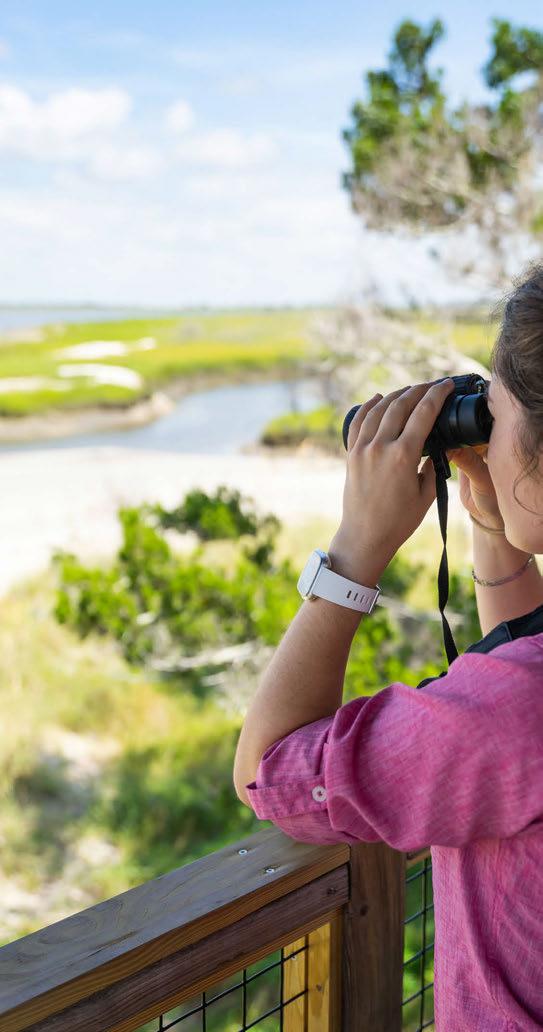
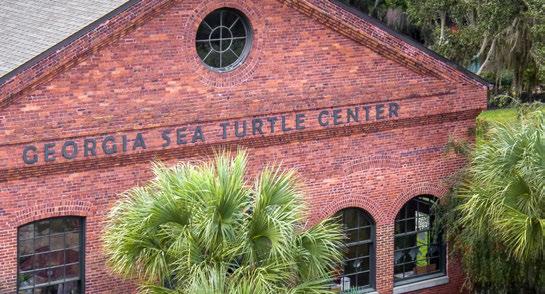

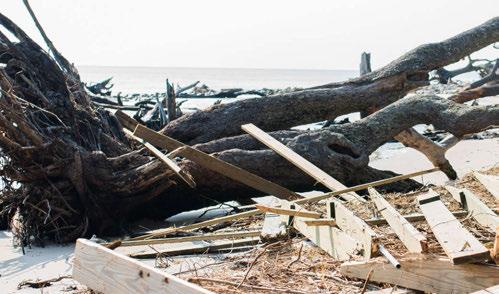
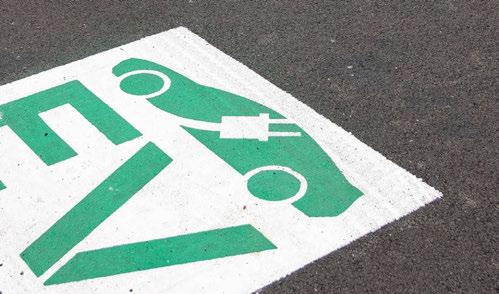
Jekyll’s natural resources—protected forests, beautiful dunes, marshes, and beaches— draw hundreds of thousands of visitors to the island every year. The Georgia Sea Turtle Center, opportunities for birding, and nature tour programs engage visitors in meaningful learning opportunities. With the majority of the island’s natural areas permanently protected from development, Jekyll prides itself on sound and responsible management of natural resources. Its Conservation Program has grown significantly since the 2014 Master Plan, and conservation considerations are fully integrated into decision-making across the JIA.
The 2021 Master Plan Update affirms the importance of the Jekyll Island Conservation Plan 2020 as the guiding document for the “conservation and preservation of the island’s natural communities and wildlife.” It is essential to the mission and vision of the JIA and should be referenced, implemented, and updated as appropriate. The sections that follow highlight several key components that are necessary for consistency across the planning documents, including recommended updates to the 2014 Master Plan map.
The 2020 update to the Jekyll Island Conservation Plan brought a renewed focus on conservation priority areas (CPAs, previously known as “special protection areas” in the 2011 plan). As noted, CPAs “are designated with the intent to conserve Jekyll Island State Park’s most valuable natural assets—those most essential to advancing the Conservation Program mission and achieving JIA’s overarching mission to ‘maintain the delicate balance between nature and humankind.’” A review by a JIA and Institute of Government geographic information systems (GIS) team revealed that CPA areas include or should include some acreage currently mapped as Developed on the 2014 Master Plan map and mapped as Undeveloped on the Conservation Plan maps. The lands noted in the following recommendation should be mapped as Undeveloped.
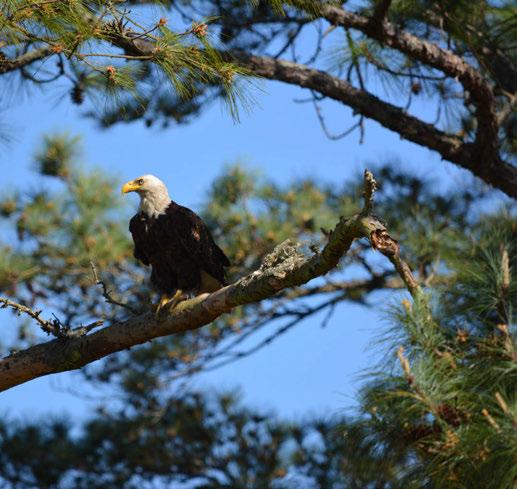
To be consistent with the Conservation Plan, the following three priority habitat areas will be reclassified on the Master Plan Update map (See Section 12) from Developed to Undeveloped land. This is not an exchange of acres. It simply reduces the number of acres classified as Developed and allows their protection as priority habitats.
• A borrow pit wetland in the interior of the island surrounded by natural areas (6.96 of acres). Once a source of fill dirt for the island, it no longer serves that purpose and now provides important habitat for wildlife priority species identified in the Conservation Plan, including wood storks, both little blue and tricolored herons, eastern newt, and barking tree frogs. Considering the goals and priorities set forth in the Conservation Plan and the fact that this area is no longer required as a source for material, reclassifying it as Undeveloped provides for better consistency across plans.
• A portion of the Clam Creek Peninsula (4.71 acres). A relatively undisturbed patch of maritime oak forest adjacent to Clam Creek Road that includes some small wetlands was misidentified in the 2014 Master Plan as Developed land. Maritime oak forest is otherwise included among the CPAs in the Conservation Plan, as are wetlands. In its natural state, this land also serves to protect the roadway from coastal flooding. This correction will better achieve consistency across plans.
• The “Beach Prairie” area (8.54 acres). As noted in the Conservation Plan, this landscape provides a “rare experience of unobstructed ocean views along the beachfront.” Not only a favorite of visitors to Jekyll, this unique landscape also provides opportunities for restoration of native maritime grasslands as noted in the Conservation Plan. Reclassifying this acreage will bring the Conservation Plan’s CPA map and the Master Plan’s Developed lands map into agreement.
Additional CPA designated lands are contained within portions of some nonresidential leased properties. As indicated in the Conservation Plan, the JIA should “negotiate additional protections in these circumstances, through amended, revised, or restated lease agreements, or through land transfers.”
In the 2021 Master Plan Update Survey, 39% of respondents indicated that environmental and wildlife conservation was their highest priority for Jekyll Island, and 31% said recreation was their highest priority. Ensuring the protection of CPAs while also providing opportunities for appropriate “outdoor recreation and environmental education along with minimal constructed elements in support of these activities”
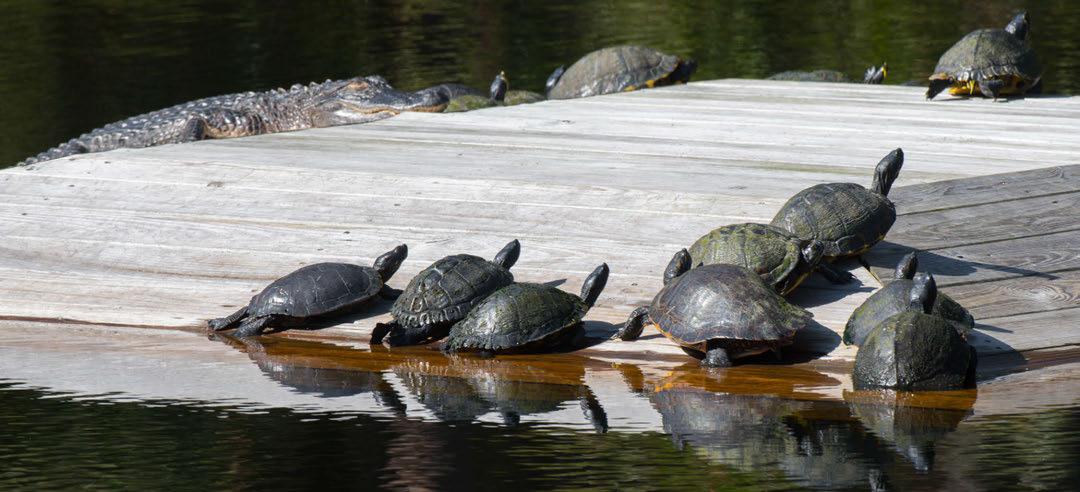
(Conservation Plan, Section 7.1) can provide unique opportunities for visitors and residents to interact with these CPAs. Careful balance as well as an understanding by the general public about what is and is not appropriate in various landscapes is essential.
The Conservation Plan clearly indicates that “sanctioned activities in CPAs and associated buffers must not significantly impose upon the viewshed of a naturedominated landscape, degrade the ecological integrity of the natural system or its habitat value for priority species, or reduce the erosion/flood protection afforded by natural features.” To reduce potential conflict, the JIA conservation staff should identify activities that are and are not appropriate in specific CPAs, develop appropriate educational or programmatic information to provide the general public with a clear understanding of how these areas could be adversely impacted by activity, and provide information on how the CPAs contribute to the conservation of Jekyll Island State Park’s most valuable natural assets.
The Jekyll Island Conservation Plan 2020 includes the objective to adapt to anticipated impacts of climate change and sea-level rise (5.1 Park-Wide Management; Objective A). In particular, the Conservation Plan notes that exceptionally high tides attributable to rising sea levels are happening so often that “the exceptional is becoming the typical.” The Conservation Plan also observes that the National Oceanic and Atmospheric Administration (NOAA) and the Georgia Department of Natural Resources’ (GADNR) Coastal Resources Division offer a variety of data, tools, and guidance to inform decision-making as communities plan for sea-level rise, storm surge, high-tide flooding, and extreme storm events. The Carrying Capacity and Infrastructure Assessment “evaluated the risks to roads, water mains, sewer lines, and sewer lift stations associated with up to 3 feet of sea-level rise.” In the Conservation Plan, JIA listed 11 strategies designed to further protect Jekyll Island from climate-related impacts, focusing in large part on planning for sea-level rise. Several key items from these strategies are identified in the recommendations that follow.
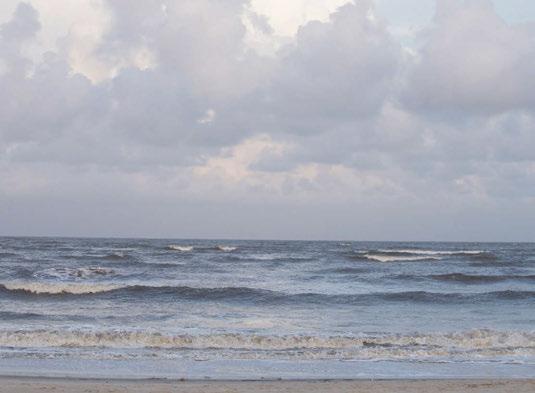
To further the Conservation Plan’s strategies to adapt to anticipated impacts from climate change and sea-level rise, the following actions should be taken:
• Objective A, Strategy 1 provides that the JIA should “set and periodically update sea-level rise planning parameters for height of rise to be anticipated within a specified time frame.” In its guidance document Enhancing Coastal Resilience with Green Infrastructure, GADNR’s Coastal Resources Division recommends that Georgia communities adopt NOAA’s “Intermediate-High” global mean sea-level scenario (1.5 meters by 2100) for community planning purposes. This projection range is also the minimum projection required for the future conditions planning prerequisites in Federal Emergency Management Agency’s Community Rating System, which provides residents discounts in flood insurance rates for select community actions that reduce flood risks. In addition, the guidance recommends adopting a 30-year horizon for long-term planning, based on the projected rate of change under NOAA’s IntermediateHigh scenario. The guidance notes that, for critical infrastructure, communities should adopt a planning scenario that considers “risks across a broad range of possible outcomes, including those associated with highconsequence, low-probability situations,” thus providing for the facilities to be developed to a higher standard of safety. Finally, the guidance encourages communities to adopt an adaptive management approach that regularly revisits the sea-level rise scenarios in use and adjusts them based on actual rates of increase realized and on new modeling and information produced by NOAA, GADNR, or local studies. A Model Sea-Level Rise Ordinance reflecting these policies is provided in the guidance. JIA should utilize the model language provided to establish the appropriate sea-level rise parameters for the island.
• Several of the strategies provide for additional identification of vegetation communities, priority species, and infrastructure assets at risk from rising sea levels, extreme weather, and a changing climate. Other strategies emphasize the need for conserving habitat and utilizing innovative approaches, including nature-based engineering, to manage the island as the climate changes. GADNR’s guidance includes a checklist and several ordinances that provide frameworks for increasing community resilience and protecting natural resources. JIA should utilize the guidance to develop tools and approaches as it continues to plan for sea-level rise, extreme weather, and climate change.
On October 6, 2016, Hurricane Matthew was the first hurricane to impact the Golden Isles in more than 50 years, and less than a year later, Hurricane Irma battered Jekyll with sustained tropical storm force winds for more than 8 hours. Combined, the storms left 81,893 cubic yards of debris to be collected, damaged and destroyed sand dunes and beach crossovers, and led to the cancellation of one of Jekyll’s most loved events, the Shrimp and Grits Festival. In response, the JIA has partnered with Glynn County, Brunswick, the BrunswickGlynn County Joint Water and Sewer Commission, and the Coastal Resources Division of the Georgia DNR to develop a shoreline protection plan that is designed to address problem areas before the next major storm hits.
The Glynn County Shoreline Protection Plan notes that sealevel rise scenarios indicate a 30% greater increase than the global average for Glynn County. Given this, and the more frequent impact of storm-related flooding and erosion, the JIA should continue to work with these partners to ensure that when areas are identified as vulnerable, whether from erosion, flooding, or both, preventative measures and remediation solutions are developed and implemented.
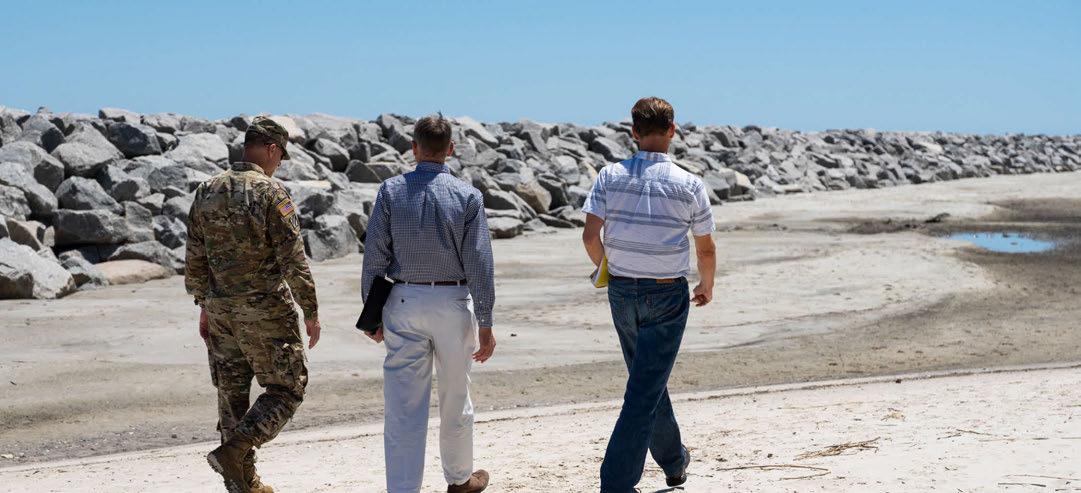
In addition to the use of management tools to maintain healthy natural landscapes, the JIA should consider tools for reducing habitat fragmentation.
As stewards of the environment, JIA conservation staff make decisions each day on the management of the various habitats on Jekyll Island. These decisions require that they consider management tools to support the health and well-being of the flora and fauna on the island, reduce the impacts of invasive species, and maintain healthy natural landscapes. In the 2021 Master Plan Update Survey, more than 96% of respondents agreed or strongly agreed that tree protection, reforestation, and forest management, which specifically includes controlled burns, are important for Jekyll Island’s future. Additionally, 94% of respondents agreed or strongly agreed that to protect rare or threatened wildlife or plants, it is sometimes necessary to remove other more dominant or invasive species.
As noted in the 2020 Conservation Plan, active management of landscapes is necessary to ensure their ecological integrity and function. Wetland restoration, invasive plant control, native grassland management, and controlled burning are tools to meet those restorative and functional goals. In addition to the use of management tools to maintain healthy natural landscapes, the JIA should consider tools for reducing habitat fragmentation. As noted in the Conservation Plan, “future development or redevelopment activities, recreation activities, and roadway improvements have the greatest potential to fragment habitat continuity or result in the loss of natural habitats.” Consideration should be given to habitat protection when land-use decisions are made, with the goal of alleviating adverse effects of these activities. Providing educational information on these and other landscape management tools for residents and visitors will be important to maintain high levels of support for land management activities and habitat protection.
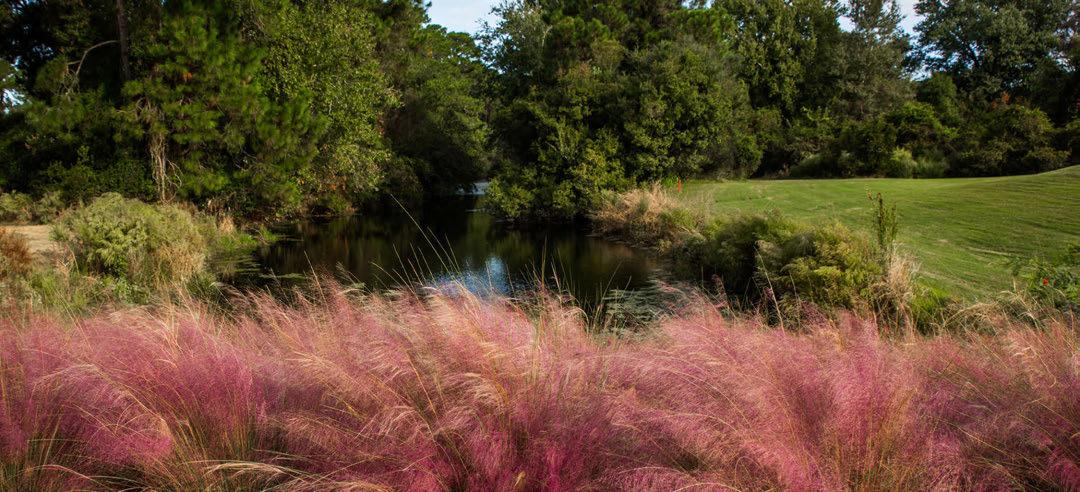
Decision-making on Jekyll Island necessarily includes considerations of operational impacts to the natural environment. Increasing the sustainability of the JIA’s own operations, its “institutional sustainability” as described in the 2020 Conservation Plan, purposefully focuses on efforts to be responsible stewards of Jekyll Island’s past, present, and future. Also noted in the Conservation Plan are three primary areas of focus: energy responsibility, material waste reduction, and water conservation. Implementing the goals outlined in the Conservation Plan will establish the JIA as a leader in institutional sustainability in Georgia and beyond and have profound positive effects on the environment.
In 2019, a privately-owned one-megawatt solar array was constructed on the island, and JIA installed 38 car-charging stations around the island (Conservation Plan, Section 6.1). Jekyll is working to reduce waste, including construction and demolition debris. In efforts to reduce waste, Jekyll has mulched 81,893 cubic yards of vegetative debris left behind after two hurricanes; processed three acres of concrete construction debris for reuse in building pads, roads, and trails; and recovered 600 cubic yards of soil by screening and sorting fines from construction debris (Conservation Plan, Section 6.2). Jekyll is also seeking to become more water efficient with the use of native plants, reducing the need for irrigation. The renovations and rebuilding of much of Jekyll’s hotel infrastructure has resulted in more efficient fixtures and appliances, reducing overall water use on the island (Conservation Plan, Section 6.3).
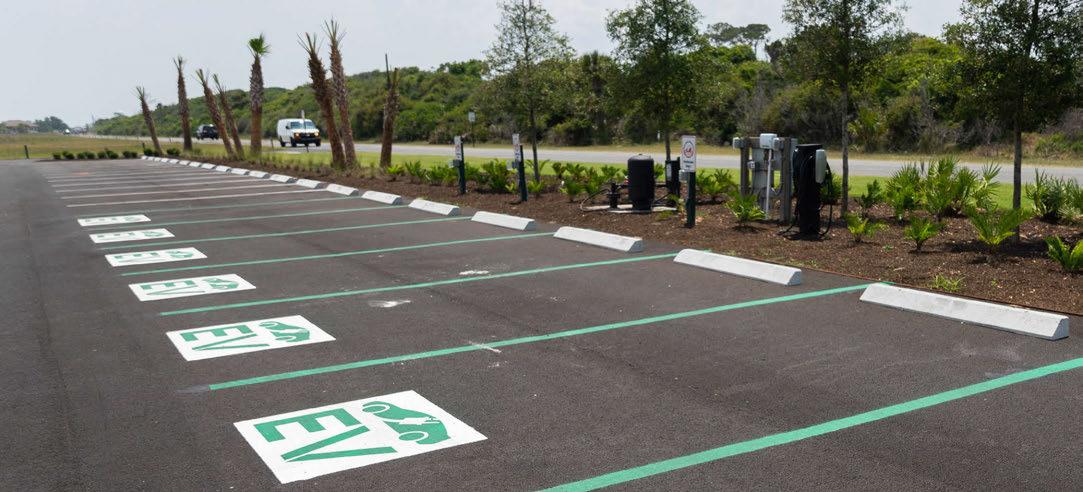
The 2020 Conservation Plan clearly states the goals for enhancing the “operational efficiency and the quality of the Jekyll Island experience” with a focus on energy responsibility, material waste reduction, and water conservation. As noted on page 82 of the Conservation Plan, successfully advancing each of these areas of focus will require dedicated funding, staff time, and strategic planning. The JIA should focus on the goals and activities outlined for institutional sustainability and direct the necessary resources and effort toward their implementation.
The Georgia Sea Turtle Center (GSTC) is one of the most beloved and well-known Jekyll Island institutions. Since opening its doors in 2007, the GSTC has been “devoted to the rehabilitation of injured sea turtles and preservation of the delicate balance of the oceanic ecosystem.” Thousands of visitors, including dozens of school groups, have been educated and inspired by the work done, as the mission says, to rehabilitate, research, and educate. In the Master Plan Update Survey, almost 77% of respondents agreed that the GSTC should be expanded to accommodate increased numbers of visitors. In July 2021, the GSTC hosted more visitors than in any previous month, with more than 23,000 paid admissions, and the visitor totals for just the first six months of 2021 surpassed the yearly total visitation in both 2014 and 2020. Given the growth in numbers, expansion will allow for increased capacity to treat and rehabilitate sick and injured sea turtles as well as accommodate growing numbers of visitors.
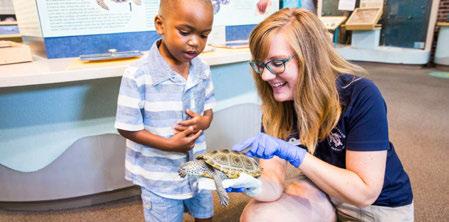

The JIA should pursue funding, whether through private donations or grant opportunities, to expand the GSTC to provide space for treatment, rehabilitation and research. Such funding could also support other programmatic priorities, including an enhanced visitor experience and expanded educational opportunities. As a muchloved institution on the island, the GSTC should continue to engage visitors in unique ticketed, behind-the-scenes opportunities and tours that provide additional revenue to support its work. The expansion of the GSTC would be an ideal campaign for the Jekyll Island Foundation to undertake.
The JIA should also use the popularity of the GSTC to build the base of support for the Mosaic Museum, as noted in the FY 2021 Strategic Plan. As Goal 4, Objective 3, Strategy 2 notes, a campaign through island hotels to promote joint ticket sales between the two facilities could result in increased visitation for the Mosaic.
The JIA should pursue funding, whether through private donations or grant opportunities, to expand the GSTC to provide space for treatment, rehabilitation, and research.
The Jekyll Island Authority has an extraordinary capacity to present conservation-based educational programming for all age groups.


The 2020 Conservation Plan suggests a number of strategies for programming and education that reach beyond the traditional presentation to engage, inform, and ensure that the information is delivered appropriately. Educational programs are both external and internal, with collaborations to support research that informs conservation management on Jekyll. As one of the beyond-the-beach opportunities on Jekyll, educational programming can have significant impact and influence.
The 2020 Conservation Plan identified educational programmatic strategies to increase the JIA’s impact in nature-based education (Section 8.1). Whether through the Georgia Sea Turtle Center, Camp Jekyll, Tidelands Nature Center, Ranger Walks, or Gatorology, the JIA and its collaborations with partners such as Georgia 4-H consistently deliver high quality, engaging educational opportunities for visitors and residents. The JIA should embrace the opportunities for teaching and learning across all age groups in addition to the opportunities provided across the diverse island landscapes.
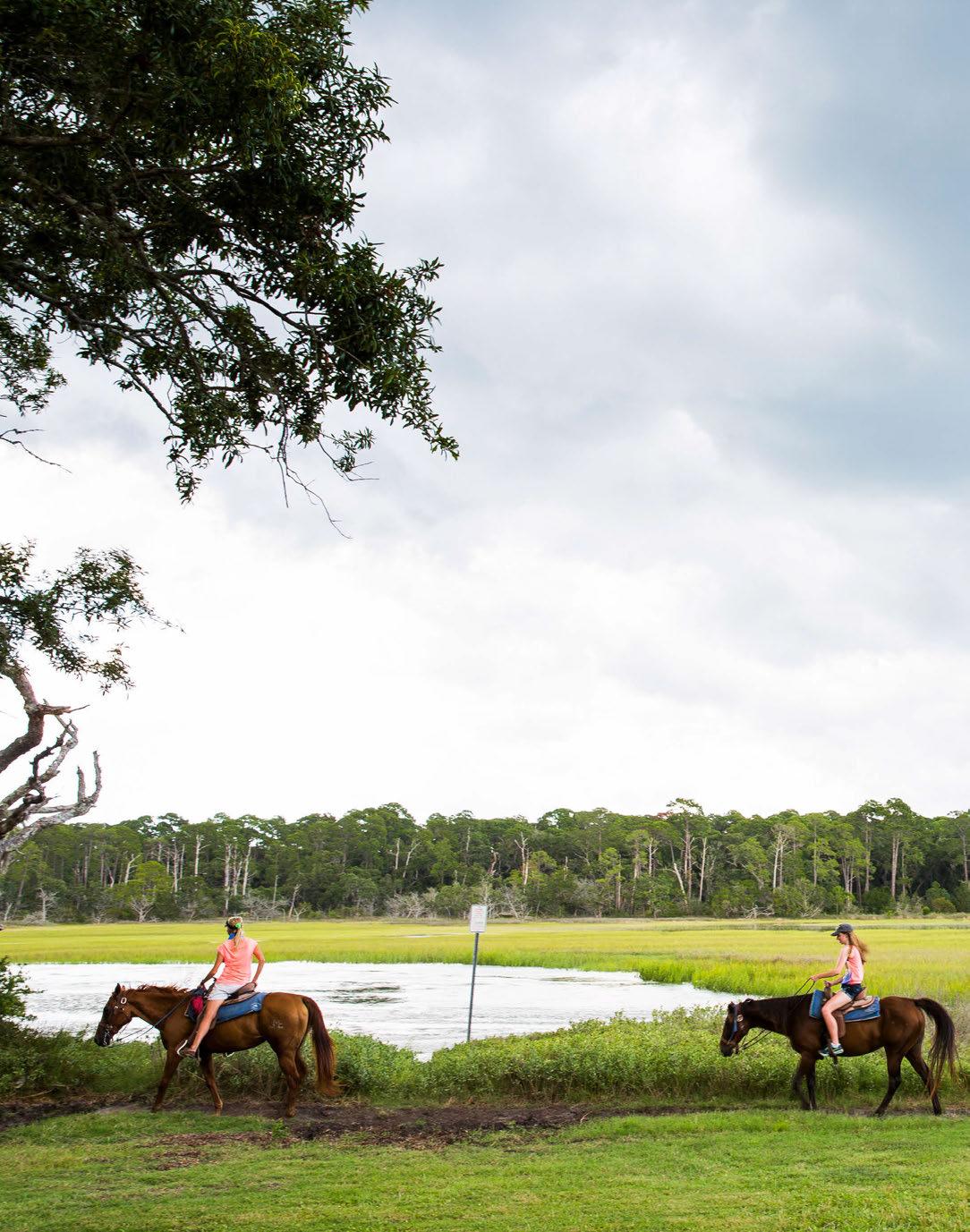
Jekyll Island provides a variety of outstanding recreational activities: golf, tennis, mini golf, miles of bike trails, and the Summer Waves Water Park. Visitors can also pursue fishing, kayaking, standup paddle boarding, and horseback riding. The island boasts winding trails to explore and outstanding areas for birding. The Jekyll Island Soccer Complex hosts summer soccer camps and a variety of tournaments throughout the rest of the year, making it a popular destination. Most JIA- operated activities that have a cost for participation operate as enterprise funds; some activities are operated by private vendors, and their economic success varies. Most recreational activities, no matter who operates them, are very popular and are seen as fairly priced by those who participate, offering something for all ages and abilities. However, Jekyll Island as a whole is lacking in nighttime recreation opportunities for families and should consider how to address that void.
As popular as the recreation amenities are, JIA must make a number of significant and potentially controversial decisions in the coming months about needed renovations, potential additions, and operational changes. Recreational amenities, whether existing or under consideration, should be viewed with several lenses as changes or additions are made: Is it operationally sustainable? Is it accessible? Will its operations be partnerprovided? Are there fees associated for users? Will it meet the needs and expectations of Jekyll Island visitors and residents? Any consideration for expanded or additional recreational amenities or opportunities must also consider the impacts on island capacity.
development
enhance conservation areas.
Critical decisions must be made in the coming months to ensure the future success of the Jekyll Island Golf Club (JIGC). The 2014 Jekyll Island Master Plan called for a review of operations in order to prioritize maintenance and improvements. The resulting 2017 assessment was undertaken by National Golf Foundation Consulting with four primary objectives: evaluate operational and economic performance of golf, strategically review the golf club and McCormick’s Grill, document the market environment and identify implications for future JIGC operations, and present recommendations for maximizing the economic potential of Jekyll Island golf moving forward.5 While the assessment determined that the JIGC has many features consistent with successful public golf course operations, it also found that years of deferred maintenance, from clubhouse repairs to major course renovations, means that JIGC falls far short of other amenities found on Jekyll Island. The assessment also noted that 63 holes is a lot to maintain and manage effectively.
Following JIA Board review, a request for information was issued in August 2017 to solicit information from qualified golf-knowledgeable individuals, firms, and joint ventures. Twenty-two responses were received from private golf course development/management companies. Following reviews and discussions and after completion of the Carrying Capacity and Infrastructure Assessment, the JIA Board approved RFP 356 for a Golf Master Plan in the fourth quarter of FY 2019.
The JIA began developing a Golf Club Master Plan that considers the factors evaluated in the 2017 assessment and identifies options that would bring financial stability to the JIGC. A consistent pattern of unsustainable loss each year must be addressed. For example, in FY 2021 alone, JIGC lost $474,714 after depreciation. Jekyll Island features 63 holes of golf, the largest number of public golf holes in the state. The current layout has, according to the Golf Club Master Plan, far surpassed its life expectancy. The plan notes that, with the exception of Pine Lakes, “no large-scale renovation or redesign has occurred on the island since the courses were first constructed.”

The Board should limit golf course commercial and residential
and5 National Golf Foundation Consulting, Assessment and Recommendations for Jekyll Island Authority Golf Program, January 2017.
The Golf Club Master Plan is not without controversy. In the open comments section of the 2021 Master Plan Survey, responses were nearly equally divided in their agreement and disagreement with the golf plan. In addition, the 2017 assessment and the 2020 Golf Master Plan vary in their approach on the actions that should be taken to ensure future success of the JIGC; however, they do agree on the need to reduce the number of holes. Controversial or not, decisions must be made to stem the tide of financial loss and revitalize the golf experience. It is worth noting that the conservation opportunities identified in the Golf Club Master Plan are immensely supportive of the goals of the Jekyll Island Conservation Plan, substantially advancing each of the seven high level Park-wide Management Objectives called for in that plan.
In preparation for some action to be taken, Phase I and II Archaeological Investigations within the Area of Potential Effect of the proposed Jekyll Island Golf Club Master Plan are underway. The project entails background research, identification and testing of archaeological sites, evaluation of significance, an assessment of effect, and management recommendations. The goal is to complete the required archaeological studies to avoid or mitigate potential effects on significant cultural resources as decisions are made on the proposed golf plan.

For many families, miniature golf, or mini golf, is a beloved activity and Jekyll tradition. However, the Jekyll facility is dated and would benefit from basic improvements or even a complete makeover. The 2014 Master Plan noted the need for drainage and landscape improvements to enhance the guest experience. The newer shade structures have significantly improved the atmosphere for guests, with much-needed relief from the sun. Miniature golf and bike rentals from the JIA, which share an enterprise fund, saw explosive growth in FY 2021 with revenues up 75% over the prior year. Such strong popularity, combined with several improvements, should continue to provide growth in this activity.
The hours for miniature golf should be adjusted seasonally to accommodate increased crowds and to allow for evening play, with a closing time of at least 8:00 p.m. on weekends in April and May. The courses should remain open seven nights a week until at least 8:00 p.m. Memorial Day through Labor Day. Doing so would provide visitors and guests with an evening activity while incurring minimal additional staffing costs for the JIA. Miniature glow golf, with glowing golf balls and hole markers, would add an additional element of nighttime fun with low investment costs.
The two 18-hole courses are also in need of upgrades, including more trash and recycling receptacles, hole improvements, and additional shade structures. Visitors are nostalgic for the “vintage” look of the courses. The JIA should consider how upgrades and updates to the courses can retain those vintage elements while also better reflecting the conservationminded vision of the island.
One of the most popular activities on Jekyll Island is biking along the multiuse paths, and efforts continue to complete the path network and improve the experience for all users by widen the paths. During peak visitation, the paths, which are shared by bikers with walkers and runners, can be crowded. Issues arise when there is a failure to observe basic courtesies, including the appropriate way to pass another user from behind.
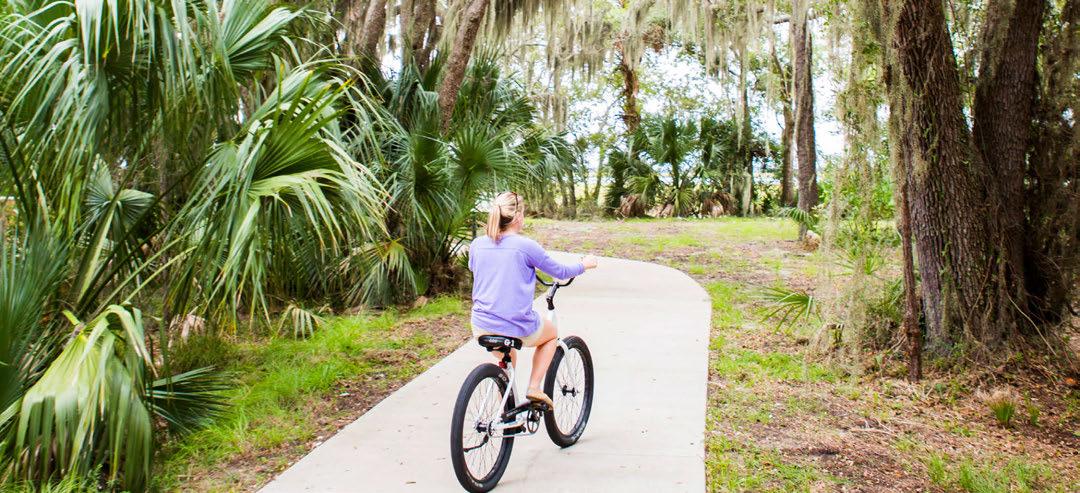
The multiuse paths are an important tool for limiting vehicular traffic on Jekyll by connecting high visitation points around the island. The paths are well-used, particularly by bicyclists, and the only tool available to prevent overcrowding is to limit the number of rental bicycles. However, enough travelers bring their own bicycles that there is no true limit. Therefore, it is more important that the JIA promote courteous, safe use of the paths to ensure those who use them for recreational riding, walking, or running or as a means of moving about the island have a positive experience. Resurfacing and rejuvenating the paths on the north loop and completing the south-end loop should be high priorities for the JIA. These path improvements will increase safety and create additional capacity for an improved rider experience.
Extending the path off island to the welcome center and then out to Highway 17, for use exclusively by bicyclists, will provide a unique biking experience for more seasoned riders.

Visitors to Jekyll Island take full advantage of the active and passive recreational opportunities available. More than 94% of survey respondents agree that the island offers a wide variety of outdoor recreation opportunities, and almost 93% agree that the activities offered meet the needs of various ages, interests, and abilities. Even with such agreement, there are always new things to consider and changes in expectations and interests, as indicated in the Conservation Plan. During the plan update process, participants provided many suggestions for new or expanded outdoor recreation possibilities, including pickleball and croquet.
The JIA should pursue expanded recreational offerings that will be financially self-sustaining, beginning with pickleball. A hybrid sport that combines elements of tennis, ping-pong, and badminton, pickleball is the fastest growing recreational sport in America, and is popular across generations. Pickleball is easy to learn, with a low price point for entry — sometimes less than $30 for two paddles and two pickleballs. The sport has easy-to-understand, simple rules. Four standard pickleball courts can fit on a standard tennis court, and there is ample information available through the USA Pickleball Association to advise on court dimensions, net height, and rules. Creating pickleball courts should be a priority, and incorporating plans for their development into the Golf Club Master Plan should be considered.

While croquet is complimentary for guests of the Jekyll Island Club Resort, providing opportunities for residents and visitors at other island hotels to rent equipment and participate may generate a small amount of revenue and a large amount of goodwill. Current memberships for play are available at the Jekyll Island Club Resort, but there is only one croquet lawn. Expanding croquet opportunities, including creating enough lawns to attract tournaments to the island, would be a popular proposal, and integrating the development of croquet lawns into the Golf Master Plan is ideal.
Most importantly, the JIA should keep a close eye on trends in outdoor recreational activities, particularly those that have few or no barriers to entry. Providing for these activities that are financially self-sustaining would afford new recreational options for visitors and residents, while keeping traditional favorites in place.
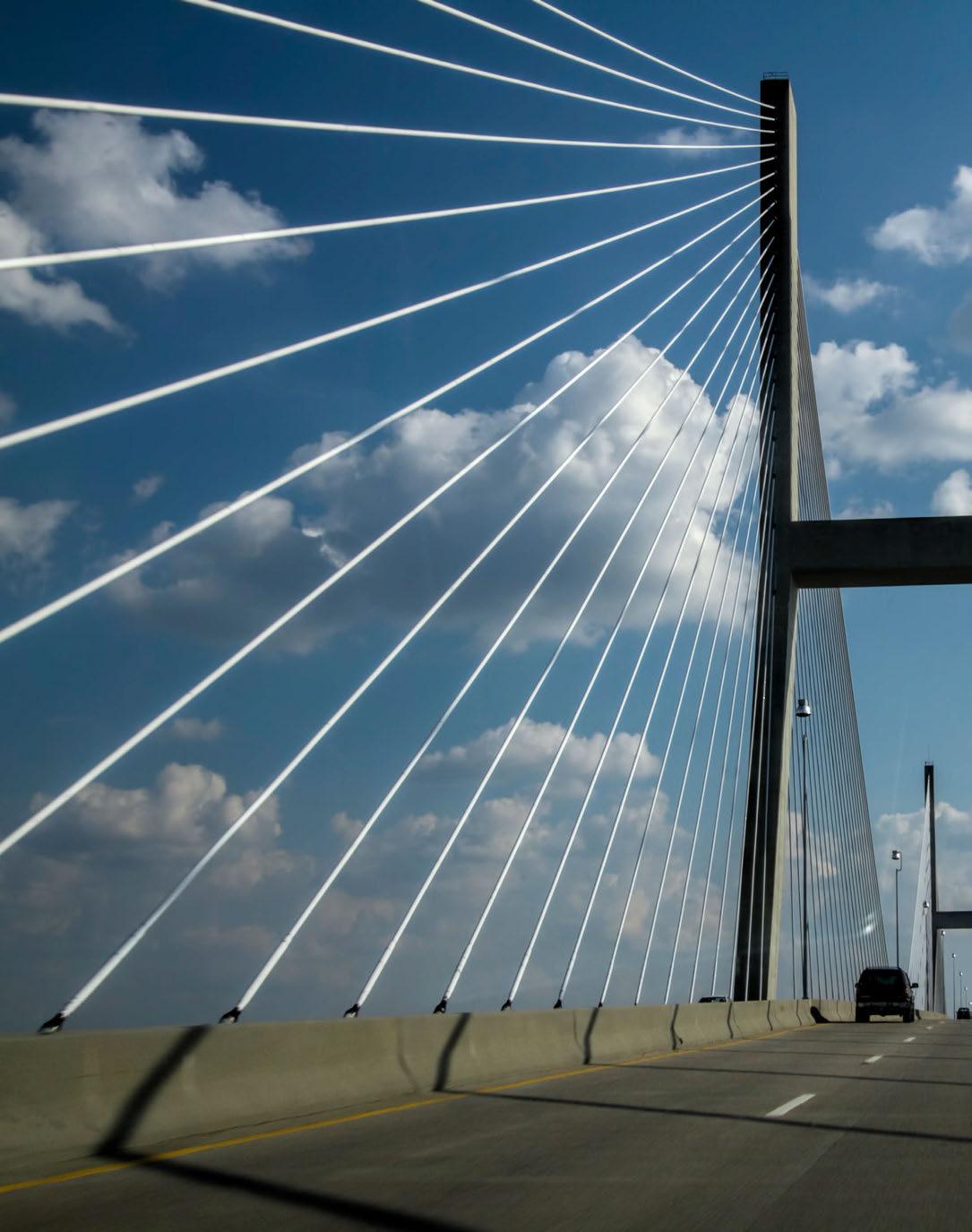
The JIA provides some services that are similar to a typical municipality: water and wastewater to residents and businesses on the island; maintenance of multiuse trails and public facilities; public parking; and the operation of a small airport, all of which makes it unique among state entities. To best serve residents and visitors, a Carrying Capacity and Infrastructure Assessment was undertaken to look at what the island could accommodate in terms of people, vehicles, and development without negatively impacting the character and natural resources of the island. Many of the findings and recommendations below are based upon that assessment as well as concerns that were raised during the public input process.
Jekyll Island has limited parking. The Carrying Capacity and Infrastructure
Assessment identified 5,796 parking spaces, with nearly 25% of those attached to residential homes and unavailable to the public. In July 2021, nearly 179,000 vehicles passed through the entry gate, an all-time high. Given the number of vehicles and the limitations of parking, Jekyll should encourage the proper use of alternative transportation to move about the island, keeping cars parked.
To reduce automobile traffic, numerous residents and visitors are traveling the island via their personal golf carts or rented carts. Others choose to bike around the island, and the growing popularity of e-bikes is also evident on Jekyll.

The JIA completed its most recent transportation study in 2016. Given that gate entry has increased by nearly 180,000 vehicles in a year-to-date comparison, the JIA should consider initiating another feasibility study to determine if the time is right for some type of intra-island transportation system. The JIA should carefully monitor numbers of visitors in the next six, 12, and 18 months to determine if the current increases in visitors continue or if they will decrease when we are finally post-pandemic. This will influence the need to advance an intra-island shuttle.
Encouraging visitors to park their cars and use alternative methods of travel around the island means that the JIA has to have the infrastructure in place to make this possible, including designated parking areas that can accommodate not just cars but also those with trailers that might be hauling a golf cart, e-bikes, or bicycles. While the island might not be ready for its own transportation system, hotel shuttles may be an effective means to reduce the number of car trips. Premium parking fees may also encourage visitors to leave their cars parked at their hotels. However, some shuttle and enforcement system must be in place for that to be effective. Additionally, working with business operators to discourage and prevent employees from occupying prime parking spaces is another important issue to address, particularly in the Beach Village. Centralized parking and
workforce shuttles may be a useful tool to keep premium parking spots available for guests.
As an alternative to automobiles, the multiuse trail network connects most of the assets of the island for bicyclists. By Georgia law, bicyclists also have a right to the road, and automobile drivers should be aware that state law also mandates at least three feet when passing a bicyclist. While the JIA may prefer that bikes stay on the paths, ensuring that drivers know that they must share the road if a rider so chooses is important.
Growing in popularity, e-bikes provide motorized assistance on pedal-driven cycles. Georgia has designated three classes of e-bikes. Class 1 e-bikes have a motor that provide “assistance only when the rider is pedaling, and that ceases to provide assistance when the e-bike reaches 20 mph.”
A Class 2 e-bike is “equipped with a throttleactuated motor, that ceases to provide assistance when the e-bike reaches 20 mph.”
A Class 3 e-bike has a motor that “provides assistance only when the rider is pedaling, and that ceases to provide assistance when the e-bike reaches 28 mph.” Class 3 e-bikes are not allowed on bike paths unless they are “within or adjacent to a highway or roadway” or they are “specifically allowed by the local authority.”6 The JIA has taken steps to limit the ability of vendors to rent or otherwise make e-bikes available on Jekyll Island, and the JIA has the authority to restrict where e-bikes are allowed to ride should that become necessary. The JIA should monitor the impact of e-bikes on other path users to determine if restrictions are appropriate.
Another increasingly popular alternative mode of transportation is privately owned or rented gas-powered golf carts and other street-legal electric carts. While these reduce automobile traffic, they can create
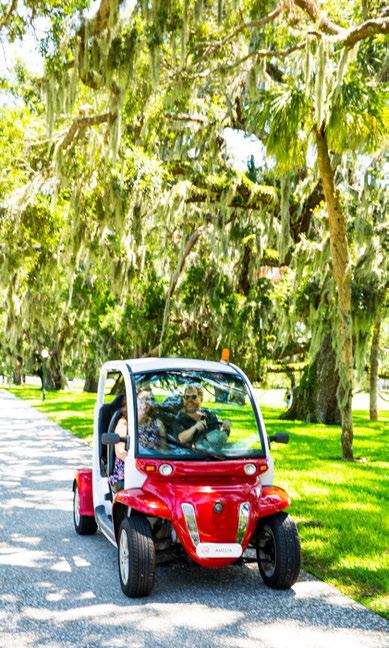
additional parking issues and can become obstacles to vehicular traffic. The island already has designated public parking for these low-speed vehicles, and the JIA should work to ensure those are the only spaces being used by carts. Golf cart rental locations on Jekyll are licensed, and the number of carts available for rent should be controlled by the license to ensure overcapacity issues do not arise in the future. The JIA should also conduct a feasibility assessment for accelerating the use of electric vehicles across the JIA fleet.
The Georgia State Patrol must ensure through regular traffic checks that all carts operating on the island are doing so legally, with the appropriate braking system, reflectors, horn, rearview mirror, seat belts, and hand holds for each passenger, as required by state law.
Airport traffic has increased significantly, if not exponentially, over the past seven years. Actual counts of flight activity are not kept. Anecdotal reports suggest that private air traffic increases in the fall and winter as well as during several weeks in the spring. Summer is the slowest time due to the potential for pop-up thunderstorms and the return to school for K-12 students. The military also regularly uses the airport.
Since 2016, efforts have been made to improve the Jekyll Island Airport facilities. The JIA addressed security and safety issues with new fencing, gates, airfield LED lighting, and a paved emergency exit. Adding fuel sales at the airport has provided a modest but steady revenue stream. According to the Georgia Department of Transportation’s Economic Impact Study, the overall annual economic impact of the Jekyll Island Airport is more than $2.6 million. Continuing to improve the facility will only serve to increase that impact.
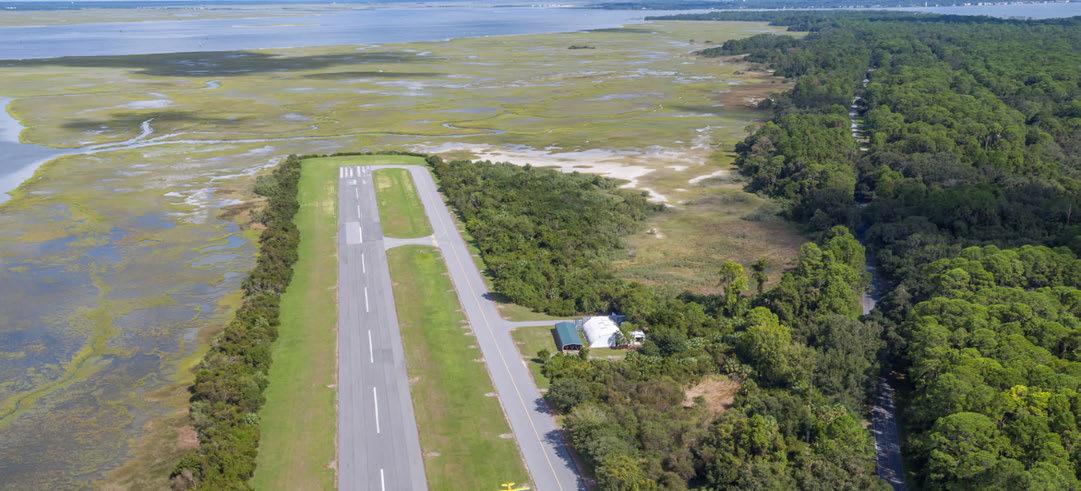
There remains untapped potential at the airport, and the JIA should consider how to develop and market facilities that would attract corporate fly-ins, with meeting space, catering, and perhaps a connection to golf or tennis or overnight packages. Developing this idea would first require an accurate count of who is using the airport, why they are flying in, and what other services at the airport might be of interest to them. JIA’s planned construction of an updated airport terminal and hangar facility slated for 2022 should provide additional beneficial economic impacts to the JIA, hotels, the convention center, and other businesses on the island within appropriate capacities.
As recommended in the Carrying Capacity and Infrastructure Assessment, the JIA should pursue and prioritize the evaluation of water infrastructure and, depending upon condition, replace or line pipes as appropriate.

The Carrying Capacity and Infrastructure Assessment carefully reviewed existing water and sewer infrastructure and considered “lifespan, age of current systems, material types, locations, sizes, and equipment efficiency.” These factors were used to better understand major constraints related to island-wide water and sewer infrastructure. While the island has sufficient water and wastewater capacity for current and planned development, several areas need to be addressed.
As recommended in the the Carrying Capacity and Infrastructure Assessment, the JIA should pursue and prioritize the evaluation of water infrastructure and, depending upon condition, replace or line pipes as appropriate. The assessment also made significant maintenance and update recommendations for the wastewater treatment system. The assessment noted that much of the “equipment associated with the (wastewater treatment) plant exceeds its lifespan and is a top priority” to not only ensure proper operation but to prevent inspection issues. In addition, lift stations “should be prioritized for inspection and maintenance.” Finally, the JIA should work to eliminate the remaining nine septic systems on the island by connecting them to the wastewater treatment system. The Infrastructure Assessment recommends prioritizing connections by age of (septic) system and location to existing sanitary mains.
At times, Jekyll Island has heavy pedestrian traffic. While the island boasts an excellent network of multiuse paths, trails, and crosswalks, the many visitors navigating the island via car need to be particularly aware of where pedestrian crosswalks are, especially on Beachview Drive and in the Beach Village.
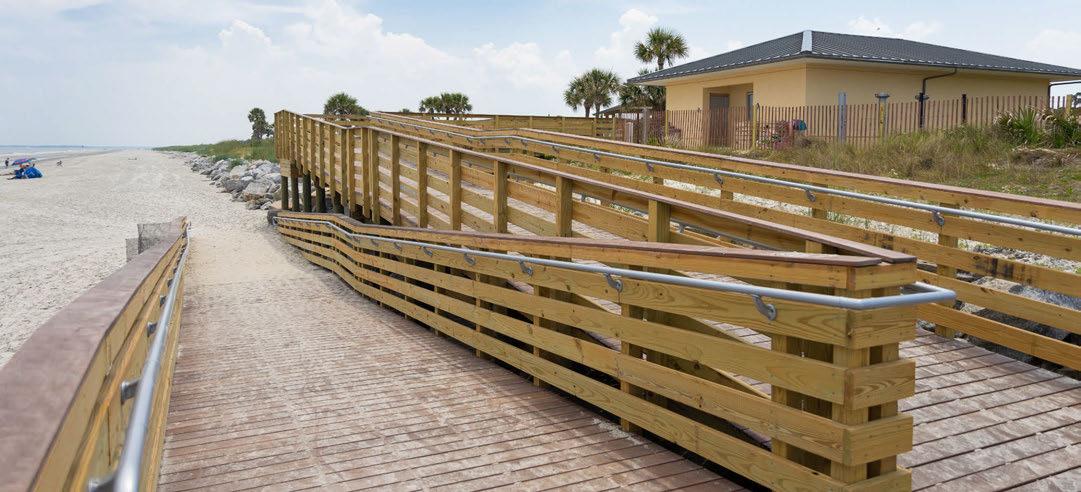
The JIA should conduct a windshield survey to determine where additional signage might benefit drivers and where signage might benefit pedestrians. The windshield survey should be conducted in both daylight and darkness and should note the condition of crosswalk markings, any area lighting or need for lighting, any existing signage, and any areas of concern.
With increased island visitation and a stable residential population of about 900, the lack of a quick-care or minuteclinic-type facility or a pharmacy on Jekyll is becoming increasingly problematic. While some assistance can be provided through EMS, they are not intended to be used as a walk-in clinic. The nearest quick-care facility is located in Brunswick, about 14 miles away. Similarly, the lack of a pharmacy or drug store also means additional trips to the mainland to pick up prescriptions or purchase medications or medical supplies not available in the convenience store. The Beach Village has space specifically designed for an urgent care facility.
The JIA should continue exploring the criteria for an urgent or quick-care clinic. Whether a public or private partnership or a co-branded clinic and pharmacy, a locally based option is desired. Several questions need to be answered before such a facility can be established: What are the typical expectations for patient load? What are the demographic criteria? What are the benefits and costs? Is there interest from either public or private health care providers to develop such an outlet? This type of facility would offer significant public benefit and should be recruited.
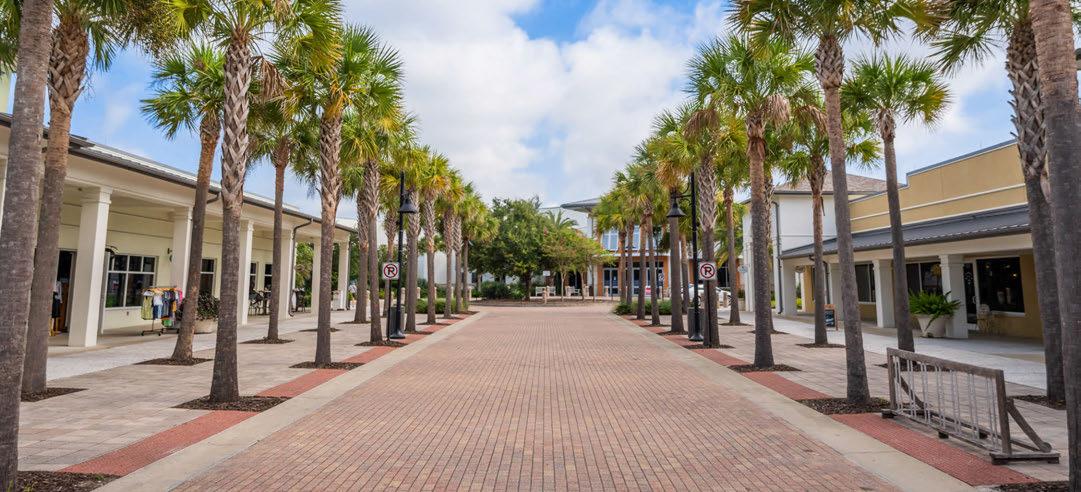
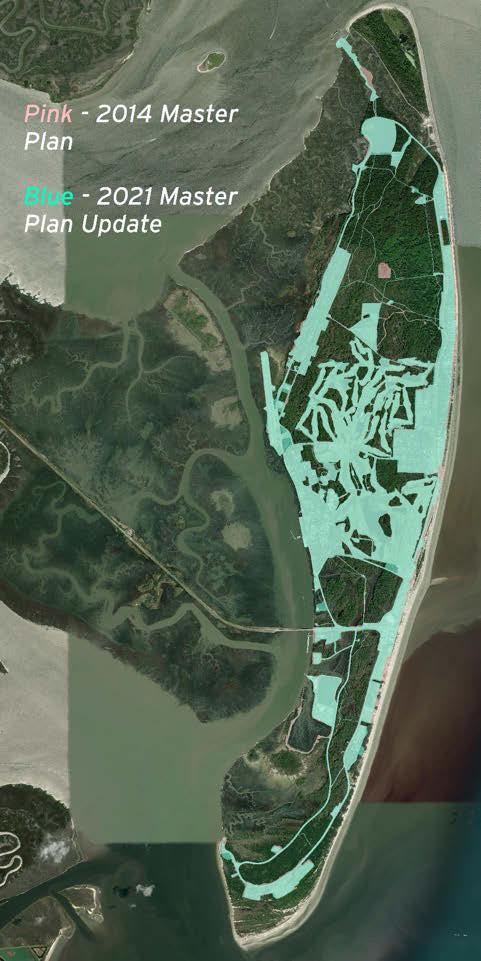

In a careful review of the 2014 Master Plan map of Jekyll Island, GIS experts from the Carl Vinson Institute of Government and the Jekyll Island Authority identified six justified corrections to the 2014 map. These corrections result in a 15.8 acreage reduction of developed acreage, from 1614.8 to 1,599 acres of developed land. Thus, the JIA is voluntarily reducing the acreage available for developed land from 1,675 acres to 1,659.4 acres.7 The overall acreage remaining for development remains the same at 60.39 acres, with approximately 40.39 acres available for public health, public safety, and public recreation and 20 acres available for unrestricted use, which can include carefully considered commercial or residential development.
There are six categories of correction.
Projection Errors. Modern GIS maps are created by combining layers. The Master Plan maps involve an underlying satellite image with a shapefile layer over it, which is the Developed layer in this case. A projection error occurs when these two layers do not properly align. There were several instances in the 2014 map where this occurred. The 2021 map corrects these issues.
Better Imagery and Underlying Shapefiles. The 2014 map was based on a 1996 map that included hand-drawn lines. Mapping technology, aerial photography, and other imagery have substantially increased our ability to create more accurate maps.
Established Road, Bike Path, and Service Road Standard Widths. The 2014 map did not have standardized travel ways. The update relies on the centerline map files held by Glynn County and created a 40-foot travel way on each side of the centerline. A new bike path file was used to establish travel ways at 3 feet to both sides. Service road widths are standardized at 18 feet.
Lease Lines. Leased land is by default counted as developed land. Some lease lines did not match with areas indicating developed land and were corrected for this map update.
Obvious Errors. Maps will inherently have some degree of error and as technology advances, our ability to see and correct these errors improves. The 2014 Master Plan was no exception and had a few obvious errors that have been addressed in this update. These 2014 errors included several areas along the historic wharf where patches of tidal oysters were considered Developed; over half of St. Andrews parking lot was categorized as Undeveloped; and a few service roads that are seemingly non-existent despite extensive searches were included erroneously as Developed.
Conservation Plan Consistency. As noted earlier in the plan, several areas are now designated as undeveloped so that the map is consistent in identifying conservation priority areas as undeveloped areas. These changes are further explained on page 48 and page 49.
The 2014 Master Plan made two significant and interconnected changes in classifying and defining land use. First, the plan replaced the 65/35 conservation-to-development ratio with a fixed measurement of Jekyll’s acreage. The fixed acreage was measured at 5,529.64 total acres. Based on this measurement, the task forces and JIA staff engaged in developing the 2014 Master Plan recommended that the land use classifications of Developed and Undeveloped be adopted. The plan classified 1,609.19 acres as Developed, which resulted in 3,920.45 acres being classified as Undeveloped.
In making these changes, the 2014 Master Plan no longer relied upon specific land-use categories such as pond or residential (as seen in Figure 2), but rather relied on the definition of Developed and Undeveloped based, as noted in the 2014 plan, on national standards, which are included on page 29. Figure 3 indicates how these areas are now classified. For example, dunes are undeveloped and fire buffers are considered developed. Finally, Figure 4 relies on the Developed category to indicate the total acreage that is defined as Developed. The acreage of the Island that is not shown as Developed is classified as Undeveloped.
The 2021 Master Plan Update relies on these same classifications — Developed and Undeveloped — that were adopted in the 2014 plan to address the categories of correction and update the Jekyll Island Land Use Map. The corrections resulted in a 15.8-acre reduction of Developed land on Jekyll Island.
Sources: Imagery and original land use: Jekyll Island Original Landuse Map, prepared by Thomas & Hutton Engineering Co. AutoCAD files, 1" = 600' scale, October 2008.
Boundary: National Oceanographic and Atmospheric Administration Mean High Water estimate for Jekyll Island. Acreage: calculated using ESRI ArcGIS
Developed (developed)
Dune (undeveloped)
Fairway (developed)
Fire buffer (developed)
Freshwater wetland (undeveloped)
Natural/forest/marsh (undeveloped)
Pond (developed)
Land Use
Developed (developed)
Dune (undeveloped)
Fairway (developed)
Fire buffer (developed)
Freshwater wetland (undeveloped)
Natural/forest/marsh (undeveloped)
Pond (developed)
Figure 5: This map represents the updates to the 2014 Master Plan map and shows 1,599 acres of land classified as Developed on Jekyll Island (blue). A total cap for developed acres is voluntarily reduced with the new map and is now 1,659.4 acres.
The areas in pink on the map were classified as Developed in 2014 and are now classified as Undeveloped as corrections were made to the 2014 map.

 Figure 6: In this map, the areas that have been reclassified from Undeveloped to Developed are in blue on the map to the right, correcting errors made on the 2014 map.
Figure 6: In this map, the areas that have been reclassified from Undeveloped to Developed are in blue on the map to the right, correcting errors made on the 2014 map.


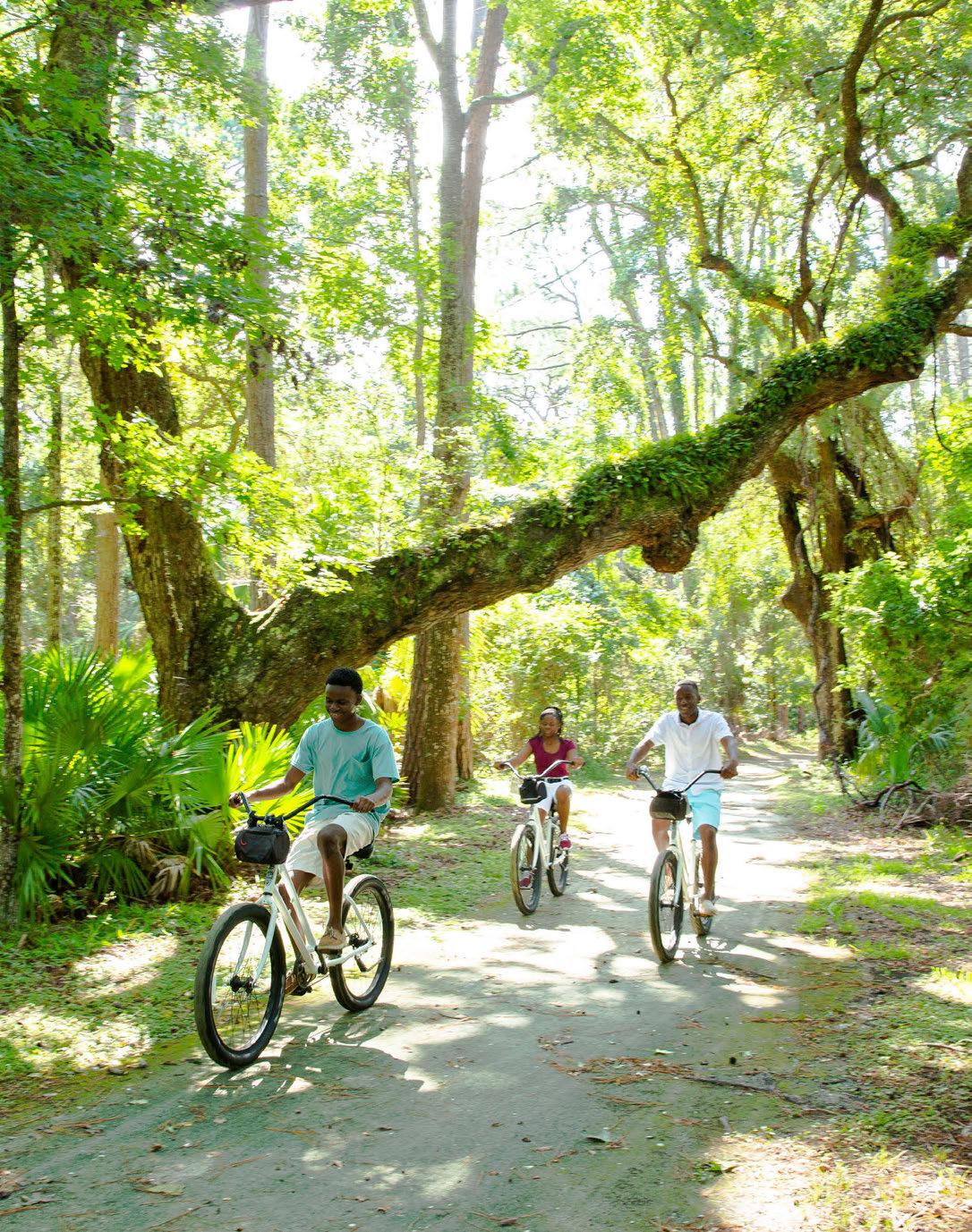
The 2021 Master Plan Update builds on the 2014 Master Plan and is significantly influenced by two studies done as recommended by the 2014 Plan. The Carrying Capacity and Infrastructure Assessment influences every section of the plan update as capacity — of cars, visitors, development, and infrastructure — must be considered in every decision made by the JIA and the JIA Board. The 2020 Conservation Plan informs and influences the 2021 plan update as the overall acreage for development is reduced and protection of unique ecological areas is increased. The Conservation Plan influences education, recreation, and institutional sustainability as the JIA strives to protect exactly what makes Jekyll so unique — its rich natural environment.
Over the next five years, the JIA will rely on the 2021 Master Plan Update to inform its annual strategic plans, operational plans, and individual programs of work. Much has been accomplished since 2014. The following outlines the recommendations established in the plan update. Because it is only a five-year plan, it is not organized into short and long-term goals. Rather, the expectation is that prioritizing the recommendations is the responsibility of the JIA staff with support and guidance from the JIA Board of Directors. Factors such as budget and capacity may influence how and when the recommendations are implemented or addressed.
This JIA Board recognizes the importance of limiting residential and commercial development on developed land not currently or previously used for those purposes to not only manage the capacity of residents and visitors, but to allow the JIA to preserve the unique natural environment that makes Jekyll so special. This must be the standard carried forward into the future.
• The JIA must consider the appropriate tools to protect existing uses and ensure suitable scope and scale of future development or redevelopment on the island.
• The JIA must consider creating a process that would invite public comment and discussion on any significant change in use.
• For any development or redevelopment, the JIA must carefully consider how a change in use will impact surrounding uses, the character of the area, and effect the overall carrying capacity of the island.
• The JIA should consider a review of land uses within the Developed category to best balance future land use decisions.
The JIA does not receive funding from the State of Georgia for operations and maintenance and instead relies on a variety of administration and enterprise funds to meet those expenses. Economic sustainability is achieved through sound investment in Jekyll’s infrastructure and amenities, and a continuous focus on the visitor and resident experience, customer service, and commitment to the Jekyll Island vision. Above all else, on Jekyll Island, balance is critical.
• Improve the "frequently asked questions" page.
• Work with the vendor to address concerns to ensure the system is easy to use and provides a good first impression.
• Increase the rate structure to control numbers as recommended in the Capacity Assessment.
• As technology improves and point-of-purchase systems can more fully interact, consider modifications that would allow visitors to pre-purchase parking and amenities through a coordinated effort with JIA and private entities.
• Consider how many visitors is too many — what is the maximum number of attendees before the event experience is diminished — and cap attendance.
• Consider requiring pre-paid parking (purchasing online before arrival) for special events (advanced reservations).
• Consider developing partnerships with other entities to provide a circulating shuttle service from off-island locations for high-traffic events.
• Consider a central parking area with shuttles to events and other venues to reduce the volume of cars driving around the island.
• Rebuild the convention center book-of-business with attendee and staff health and safety in mind.
• Provide remote connections, while simultaneously supporting in-person participation for meetings and conference events.
• Increase convention center revenue by expanding the number of groups that rely on the full array of its offerings.
• Market the capabilities of the convention center and the assets of the island for both meeting attendees and for those who might travel along to enjoy the destination.
• Explore the benefits of extended restaurant hours, at least during peak season, as well as extending the hours of operation of Jekyll Market and other Beach Village stores.
• Explore the potential for food truck events or a dedicated food truck area to bring in a wide variety of food options as well as to provide a take-out option for residents and visitors.
• Existing restaurants should consider how providing take-out and delivery options might benefit their businesses or how they might jointly develop a delivery service.
• The convention center should consider how it might provide take-out options for additional special occasions and during unusual circumstances.
• Reduce the number of vehicles on the island at a given time and provide ways to move visitors around the island that do not require personal automobiles, including off-island parking and a shuttle system.
• Develop a parking reservation system that controls the number of people on the island or at a specific location for a given amount of time.
• Consider implementing “premium parking” options, whereby visitors pay an additional fee to park in a particular area for a set amount of time in addition to an on-island trolley or off-island shuttle system.
• Consider multiday rather than single-day events to reduce the number of people and cars on the island and to improve the visitor experience.
Jekyll Island Campground Improvements
• Fully implement the long-range plan, which includes the addition of four new bathhouses, up to 54 new pullthrough campsites, a new camp store, and laundry services.
• Develop an Operational Management Plan to ensure the fully built-out Jekyll Island Campground meets the needs and expectations of visitors and the JIA.
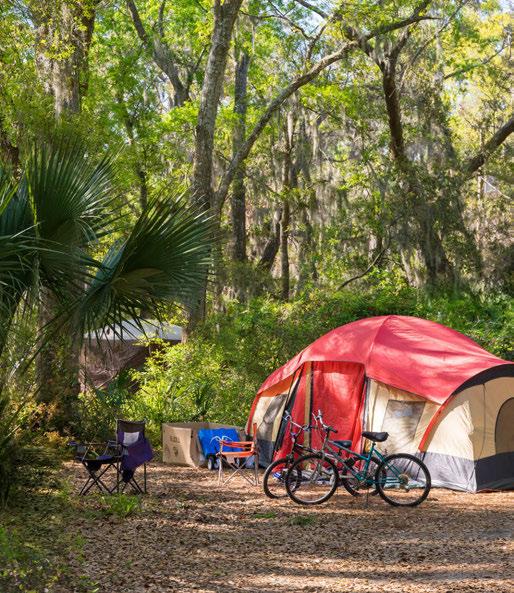
An impressive 98% of survey respondents indicated that they enjoy visiting the Jekyll Island Historic District. The district, the Wanderer Memory Trail, the Native American artifacts, and stories of others who have occupied the island over time highlight the rich and varied history and culture of Jekyll Island. While many visitors focus on the historic homes and buildings highlighted by the grand Jekyll Island Club, there are other important stories to share. Maintaining and preserving these unique resources is critical as they contribute significantly to the character of the island.
• Focus on the objectives presented under Goal 4 Summary — Enhance Historic Resources — in the FY 2021 Strategic Update: maintain historic structures and manage cultural resources; make ADA assessments and improvements; increase awareness of Jekyll’s history and visitor attraction to the Mosaic; pursueadaptive reuse of Gould Casino, Villa Ospo, and Villa Marianna; public tours of Hollybourne Cottage; improve the sustainable business model for Historic District operations; enhance historical interpretation; and improve records inventory in accordance with State of Georgia requirements.
• Ensure the proper protection, restoration, and enhancement of the Historic District and other culturally significant assets.
• Recognize the many volunteers who significantly contribute to the Historic District restoration efforts.
• Offer year-round activities, creative lectures, and evening presentation experiences that provide opportunities to learn about the history of the island before there was a Historic District.
• Consider new programming options: wine walks, improvements to the Rockefeller experience, gallery talks and lectures, cocktail evenings, summer camps, more Christmas/holiday programs, and more period dress for interpreters.
• Consider broader audiences including kids’ activities, school programs, hands-on archaeological research, and learning for adults.
• Consider preservationists, scholars, authors, and local legends with various perspectives and diverse knowledge of the island to engage visitors and residents throughout the year.
• Identify an interested party to lease, redevelop, promote, and operate the amphitheater.
• Ensure that the significant historic and cultural resources of Jekyll Island are preserved and protected from extreme weather events and sea-level rise.
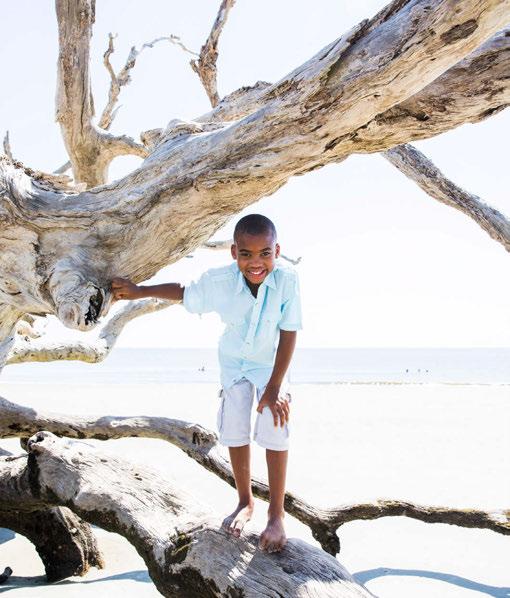
• Partner with university researchers and graduate students to monitor the known archaeological sites and fully document and safeguard those resources.
• Identify and survey additional sites, with a particular focus on those that may be more at risk of environmental impacts.
• Opportunities for external funding should be identified, including grants that can be collaboratively developed with external partners, to support the protection and preservation of archaeological resources.
• Classify the Confederate battery as an undeveloped parcel to protect its historic significance and accurately reflects its future use.
The 2021 Master Plan Update affirms the importance of the Jekyll Island Conservation Plan 2020 as the guiding document for the “conservation and preservation of the island’s natural communities and wildlife.” It is essential to the mission and vision of the JIA and should be referenced, implemented, and updated as appropriate.
• To be consistent with the Conservation Plan, the following three priority habitat areas will be reclassified on the Master Plan Update map (See Section 12) from Developed land to Undeveloped area:
» A borrow pit wetland in the interior of the island surrounded by natural areas (6.96 of acres);
» A portion of the Clam Creek Peninsula (4.71 acres);
» The “Beach Prairie” area (8.54 acres);
» Additional CPA-designated lands are contained within portions of some nonresidential leased properties, and the JIA should negotiate additional protections in these circumstances through amended, revised, or restated lease agreements, or through land transfers.
• Identify activities that are and are not appropriate in specific CPAs.
• Develop appropriate educational or programmatic information to provide the general public with a clear understanding of how these areas could be adversely impacted by activity.
• Provide information on how the CPAs contribute to the conservation of Jekyll Island State Park’s most valuable natural assets.
• Set and periodically update sea-level rise planning parameters for height of rise to be anticipated within a specified time frame.
• Adopt a 30-year horizon for long-term planning, based on the projected rate of change under NOAA’s Intermediate-High scenario.
• Adopt a planning scenario that considers “risks across a broad range of possible outcomes, including those associated with high-consequence, low-probability
situations,” thus providing for the facilities to be developed to a higher standard of safety.
• Adopt an adaptive management approach that regularly revisits the sea-level rise scenarios in use and adjusts them based on actual rates of increase realized and on new modeling and information produced by NOAA, GADNR, or local studies.
» Utilize the model language provided to establish the appropriate sea-level rise parameters for the island.
» Utilize available guidance to develop tools and approaches as JIA continues to plan for sealevel rise, extreme weather, and climate change.
• Continue to work with Glynn County Shoreline Protection Plan partners to ensure that when areas are identified as vulnerable, whether from erosion, flooding, or both, preventative measures and remediation solutions are developed and implemented.
Fragmentation
• Actively manage landscapes to ensure their ecological integrity and function.
• Consider tools for reducing habitat fragmentation.
• Consider habitat protection when land-use decisions are made, with the goal of alleviating adverse effects of these activities.
• Provide educational information on landscape management tools for residents and visitors.
Institutional Sustainability
• Focus on the goals and activities outlined for institutional sustainability in the Conservation Plan and direct the necessary resources and effort toward their implementation.
Georgia Sea Turtle Center
• Pursue funding, whether through private donations or grant opportunities, to expand the GSTC to provide space for treatment, rehabilitation, and research.
• Support other programmatic priorities, including an enhanced visitor experience and expanded educational opportunities.
• Continue to engage visitors in unique ticketed, behindthe-scenes opportunities and tours that provide additional revenue to support the center's work.
• Use the popularity of the GSTC to build the base of support for the Mosaic Museum and promote joint ticket sales between the two.
• Support the educational programmatic strategies identified in the 2020 Conservation Plan to increase the JIA’s impact in nature-based education (Section 8.1).
• Consistently deliver high-quality, engaging educational opportunities for visitors and residents with collaborative partners such as Georgia 4-H.
• Embrace the opportunities for teaching and learning across all age groups in addition to the opportunities provided across the diverse island landscapes.
Recreational amenities, whether existing or under consideration, should be viewed with several lenses as changes or additions are made: Is it operationally sustainable? Is it accessible? Will its operations be partnerprovided? Are there fees associated for users? Will it meet the needs and expectations of Jekyll Island visitors and residents? Any consideration for expanded or additional recreational amenities or opportunities must also take into account the impacts on island capacity.
• The JIA Board must carefully and methodically determine the future of golf and golf course operations.
• Limit golf course commercial and residential development and enhance conservation areas.
• The Board must decide how to best invest in the JIGC to ensure that golf patrons receive an experience unmatched by other public courses in a setting unlike any other.
• Adjust the hours for miniature golf seasonally to accommodate increased crowds and to allow for evening play.
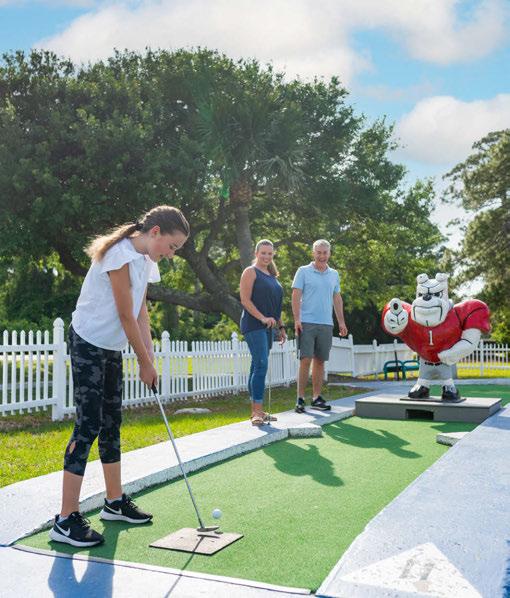
• Consider adding miniature glow golf — glowing golf balls and hole markers — for enhanced nighttime fun with low investment costs.
• Consider how upgrades and updates to the courses can retain vintage elements while also better reflecting the conservation-minded vision of the island.
• Promote courteous, safe use of the paths to ensure those who use them for recreational riding, walking, or running or as a means of moving about the island have a positive experience.
• Resurface and rejuvenate the paths on the north loop and complete the south-end loop.
• Extend the path off-island to the welcome center and then out to Highway 17, for use exclusively by bicyclists. Other
• Pursue expanded recreational offerings that will be financially self-sustaining beginning with pickleball.
• Expand croquet opportunities, including creating enough lawns to attract tournaments to the island, and integrate the development of croquet lawns into the Golf Master Plan.
• Keep a close eye on trends in outdoor recreational activities, particularly those that have few or no barriers to entry. Providing for these activities that are financially self-sustaining would afford new recreational options for visitors and residents, while keeping traditional favorites in place.
To best serve residents and visitors, a Carrying Capacity and Infrastructure Assessment was undertaken to look at what the island could accommodate in terms of people, vehicles, and development without negatively impacting the character and natural resources of the island. Many of the findings and recommendations below are based upon that assessment as well as concerns that were raised during the public input process.
• Consider initiating another feasibility study to determine if the time is right for some type of intraisland transportation system.
• Carefully monitor numbers of visitors in the next six, 12, and 18 months to determine if the current increases in visitors continue or if they will decrease when we are finally post-pandemic.
• Encourage visitors to park their cars and use alternative methods of travel around the island, and ensure the infrastructure is in place to make this possible, including designated parking areas that can accommodate not just cars but also those with trailers that might be hauling a golf cart, e-bikes, or bicycles.
• Work with hotels to encourage shuttles to reduce the number of on-island car trips.
• Consider premium parking fees to encourage visitors to leave their cars parked at their hotels once a shuttle and enforcement system are in place.
• Work with business operators to discourage and prevent employees from occupying prime parking spaces.
• Ensure that automobile drivers know that they must share the road with bicyclists.
• Monitor the impact of e-bikes on other path users to determine if restrictions are appropriate.
• Golf cart rental locations on Jekyll are licensed, and the number of carts available for rent should be controlled by the license to ensure overcapacity issues do not exist in the future.
• Conduct a feasibility assessment for accelerating the use of electric vehicles across the JIA fleet.
• The Georgia State Patrol must ensure through traffic checks that all carts operating on the island are
doing so legally, with the appropriate braking system, reflectors, horn, rearview mirror, seat belts, and hand holds for each passenger, as required by state law.
• Consider how to develop and market facilities that would attract corporate fly-ins, with meeting space, catering, and perhaps a connection to golf or tennis or overnight packages.
• Develop an accurate count of who is using the airport, why they are flying in, and what other services at the airport might be of interest to them.
• Follow through with planned construction of an updated airport terminal and hangar facility to provide additional beneficial economic impacts to the JIA, hotels, the convention center, and other businesses on the island within appropriate capacities.
• Pursue and prioritize the evaluation of water infrastructure and, depending upon condition, replace or line pipes as appropriate.
• Pursue maintenance and update recommendations for the wastewater treatment system.
• Prioritize lift stations for inspection and maintenance.
• Work to eliminate the remaining nine septic systems on the island by connecting them to the wastewater treatment system.
• Conduct a windshield survey to determine where additional pedestrian signage might benefit drivers and where signage might benefit pedestrians.
» Note the condition of crosswalk markings, any area lighting or need for lighting, any existing signage, and any areas of concern.
• Continue exploring the criteria for an urgent or quickcare clinic, including:
» What are the typical expectations for patient load?
» What are the demographic criteria?
» What are the benefits and costs?
» Is there interest from either public or private health care providers to develop such an outlet?
Six categories of correction result in a 15.8 acreage reduction of developed acreage, from 1,614.8 to 1,599 acres of developed land. The JIA is voluntarily reducing the acreage available for developed land from 1,675 acres to 1,659.4 acres. There are approximately 60.39 acres remaining for potential development, with 40.39 acres available for public health, public safety, and public recreation and 20 acres available for unrestricted use.
There are six categories of correction addressed in the plan update:
• Projection errors
• Better imagery and underlying shapefiles;
• Established road, bike path, and service road standard widths
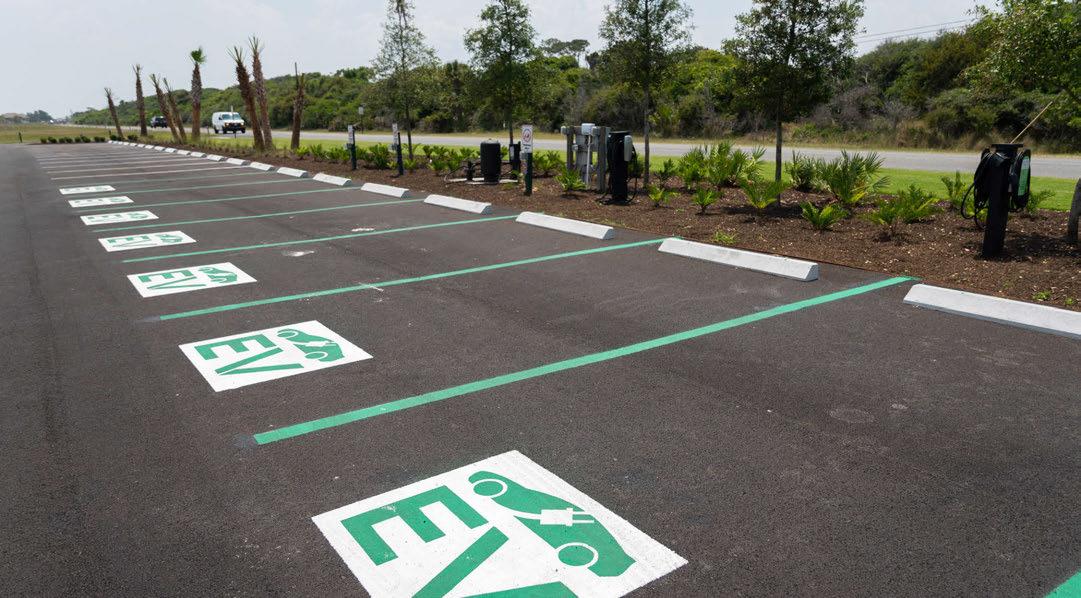
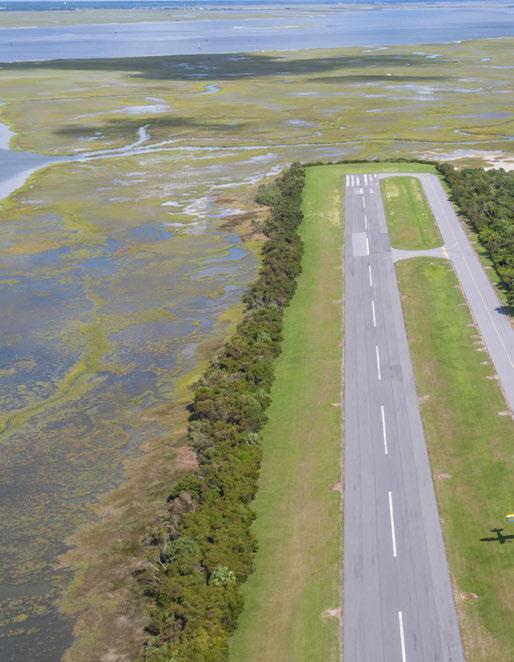
• Lease lines
• Obvious errors
• Conservation plan consistency.
